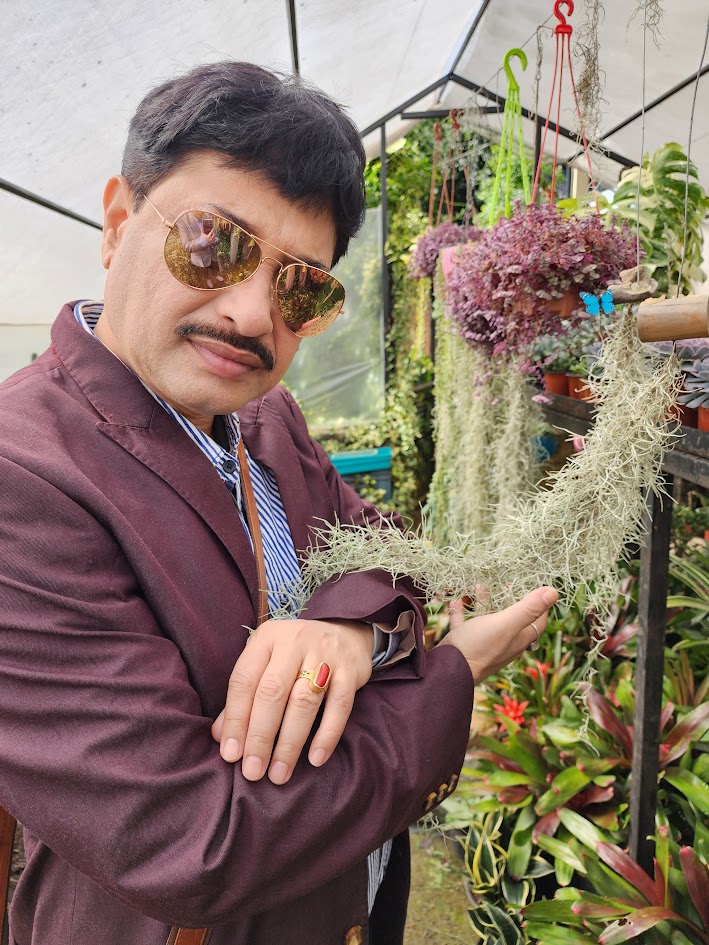Making a home garden doesn’t need to be tricky or cost a fortune. Whether you have a tiny balcony or a big backyard, you can find simple ways to bring some green into your life.
Any outdoor area can turn into a thriving garden if you mix the right plants, containers, and a few creative ideas.
Grow fresh herbs on your windowsill or attract butterflies with colorful flowers. These gardening projects work for beginners and folks with more experience, too.
You’ll find something for every season, budget, and skill level. Gardening should feel fun and rewarding, not stressful.
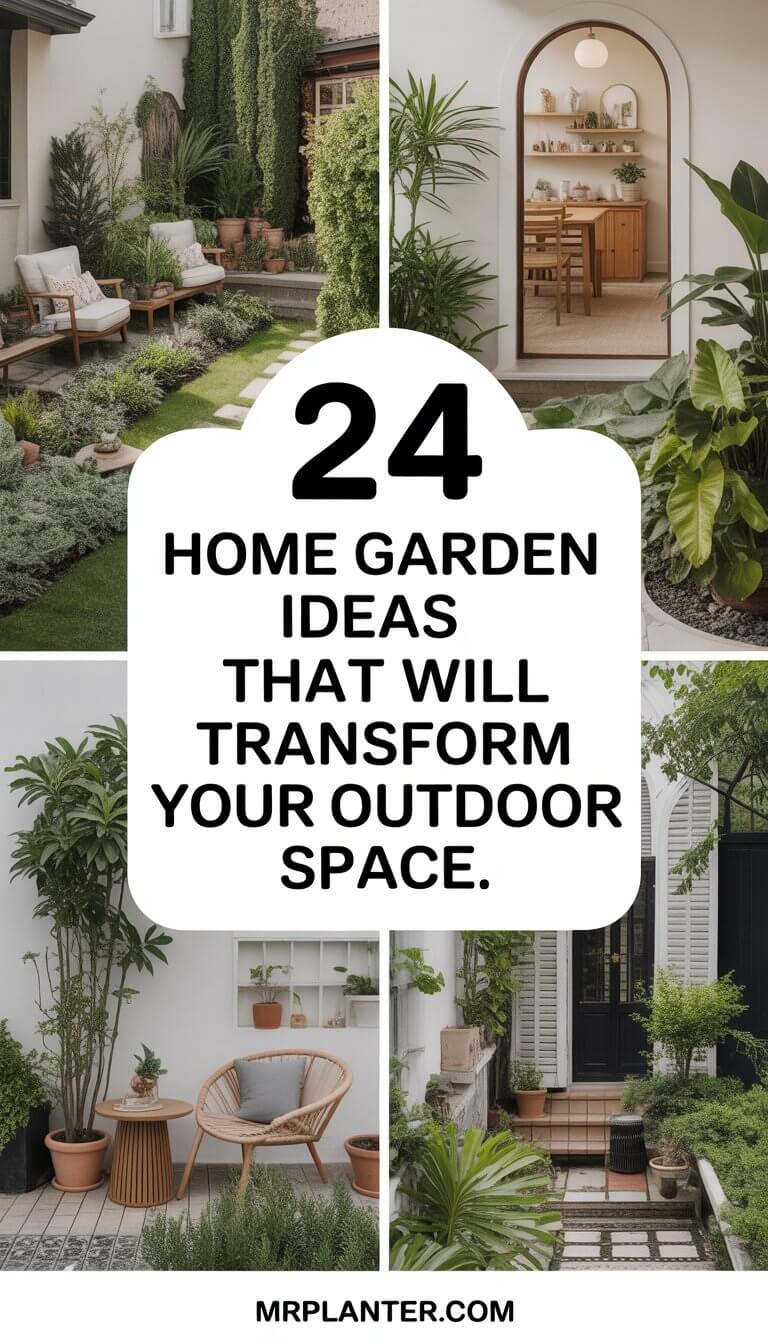
1. Create a pollinator-friendly flower bed with native plants
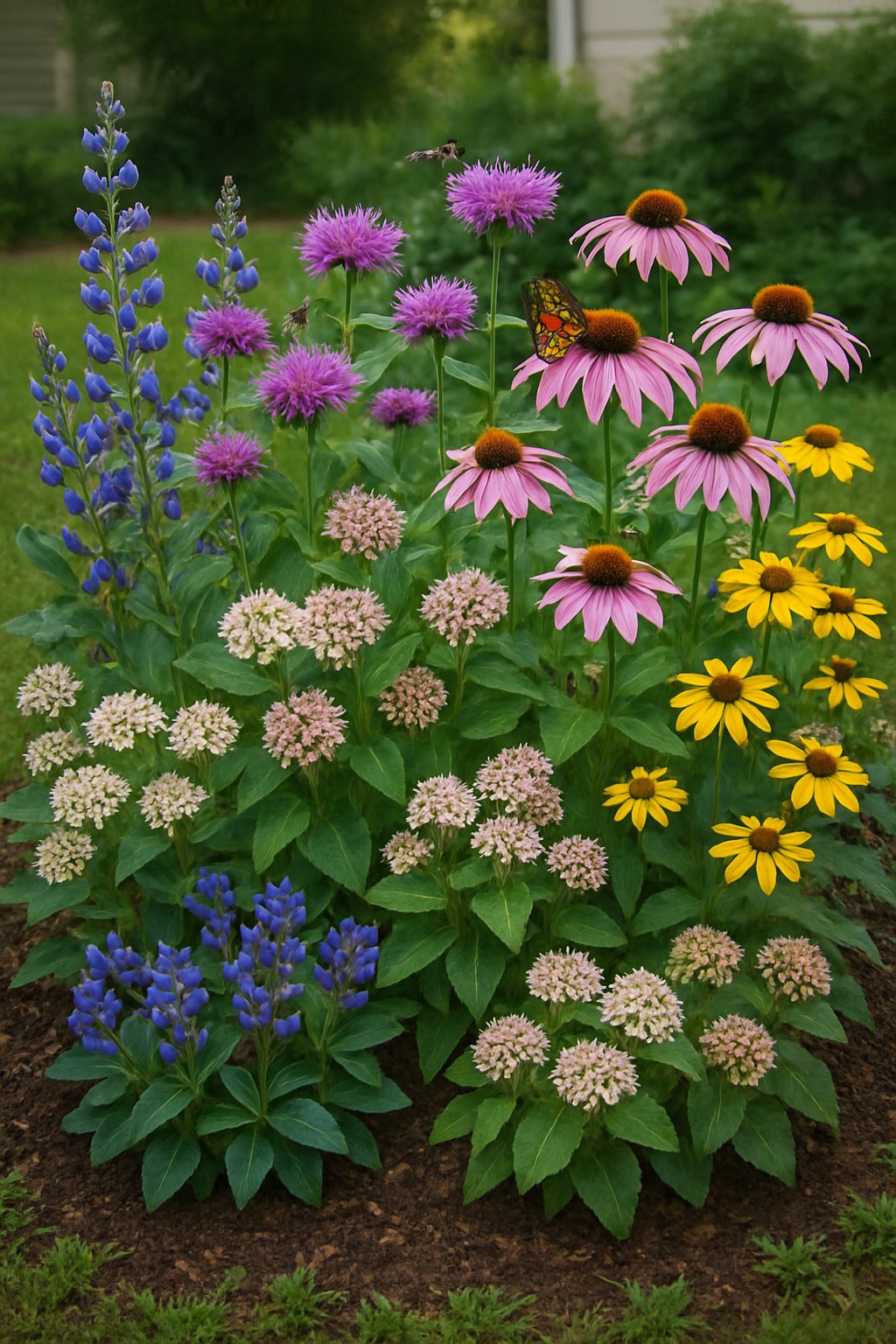
Native plants help bees, butterflies, and other pollinators feel right at home. These grow naturally in your area and offer food that local pollinators crave.
Pick a sunny spot for your flower bed. Most pollinator plants need at least six hours of sun each day to really bloom.
Start with easy native flowers like purple coneflowers, black-eyed Susans, or wildflowers. They’re simple to grow and bring in all sorts of pollinators.
Plant flowers that bloom at different times. That way, pollinators can find food from spring through fall.
Group the same plants together in little clusters. Pollinators find flowers faster and collect more pollen this way.
If monarch butterflies visit your area, add some native milkweed. Monarchs lay eggs and feed their babies on this plant.
Expert Tip from MrPlanter: “Even one native pollinator plant makes a real difference for local wildlife. Start small with just a few plants and add more each season as your confidence grows.”
2. Set up a vertical herb garden on your balcony
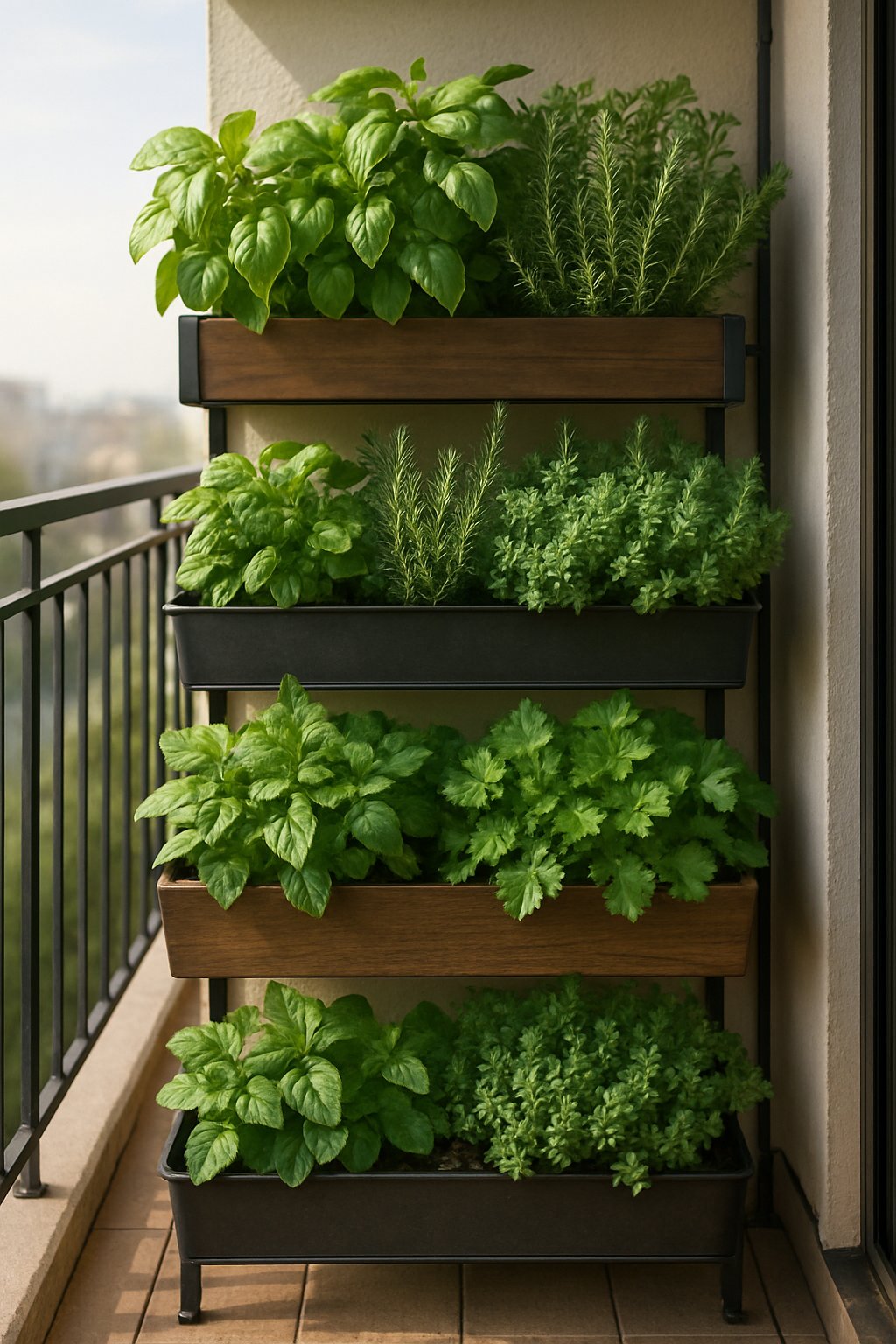
A vertical herb garden fits perfectly on small balconies. You don’t need much floor space to grow fresh herbs.
Use your balcony wall or railing for extra growing space. Wall-mounted planters or hanging containers work well here.
Pick herbs you cook with the most, like basil, mint, or parsley. These do great in containers and don’t need deep soil.
Stack planters at different heights to fit more herbs. This makes it easier to grab herbs while you’re cooking, too.
Make sure your balcony gets enough sunlight—herbs want at least 4-6 hours of direct sun daily.
Water your vertical garden often, since containers dry out fast. Stick your finger in the soil to check for moisture.
Expert Tip from MrPlanter: “Start with easy herbs like chives and oregano if you’re new to balcony gardening. They’re almost impossible to kill and give you quick wins to build confidence.”
3. Use colorful containers for small-space gardening
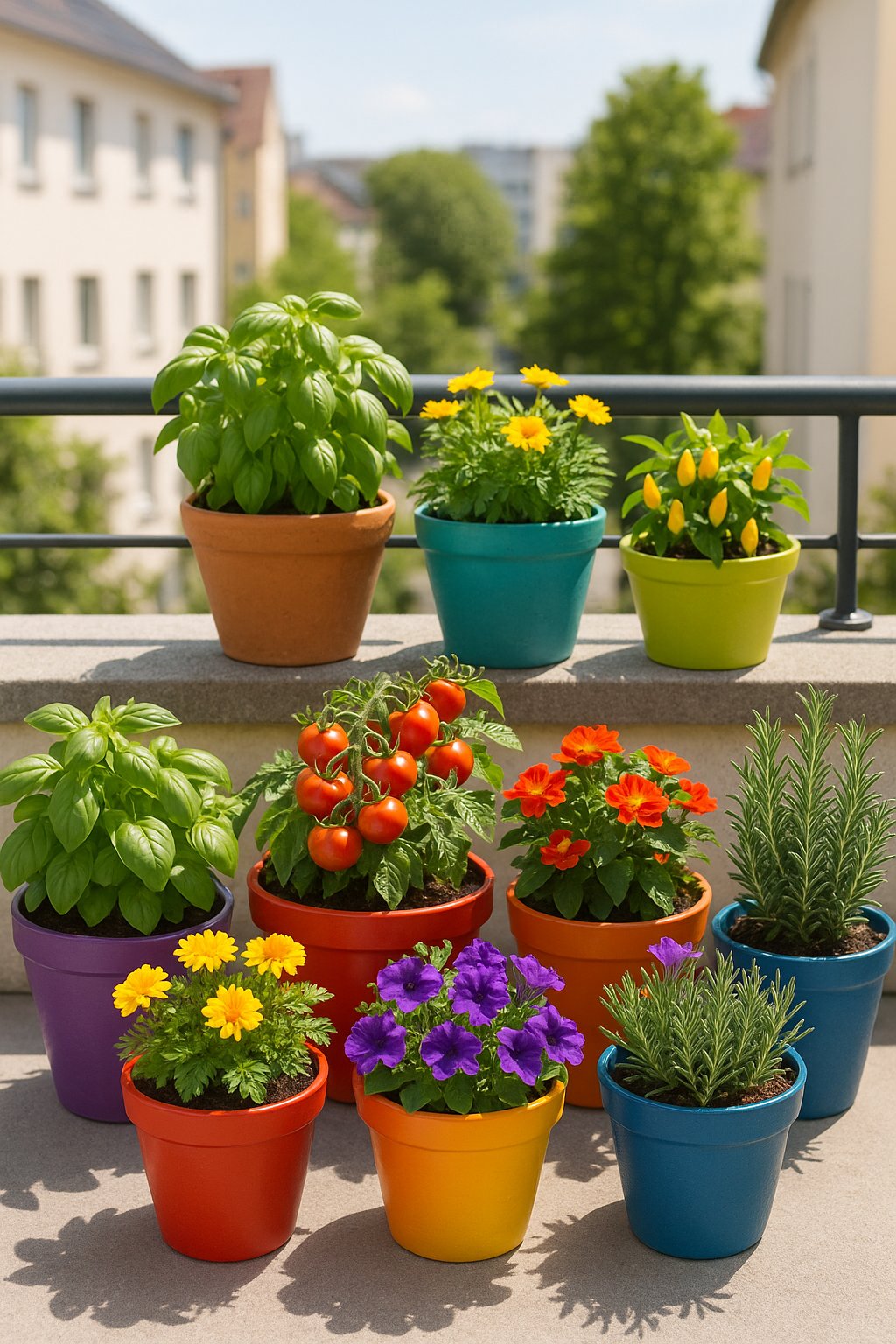
Bright containers instantly liven up small spaces like balconies, patios, or windowsills. You can grow flowers, herbs, and even veggies without a yard.
Go for bold colors like red, blue, or yellow to make your plants stand out. Mix up sizes and shapes for a look that feels playful.
Old buckets, wooden crates, and ceramic pots all work as planters. Paint them in colors you love to match your style.
Stack small containers on shelves or steps to add layers. You’ll get more growing space without using up precious floor room.
Colorful pots also help you organize by plant type. Maybe green pots for herbs and bright ones for flowers?
Expert Tip from MrPlanter: “Choose containers at least 6 inches deep for most plants to grow healthy roots. Always make sure your colorful containers have drainage holes to prevent root rot.”
4. Build a raised vegetable bed for easy access
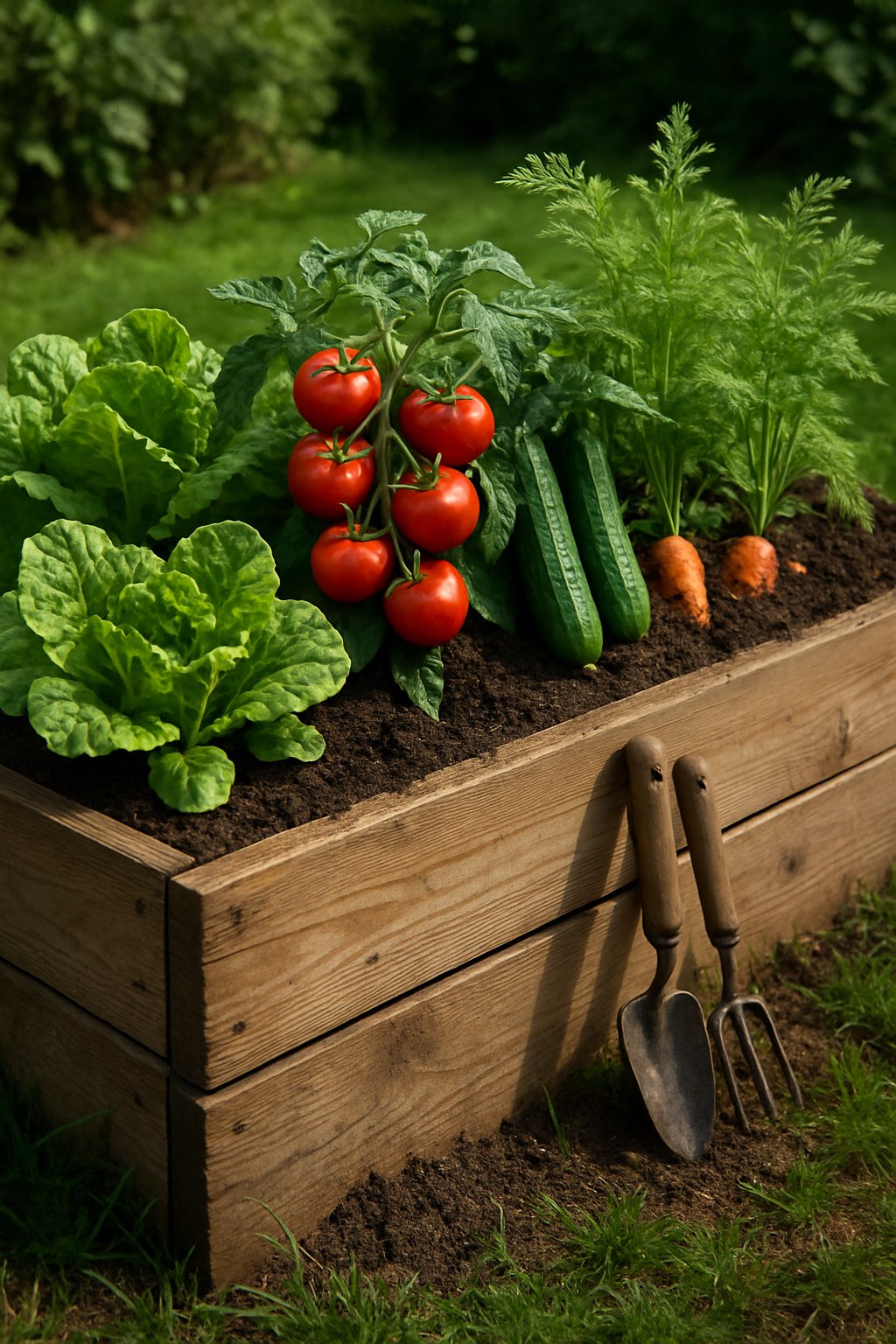
Raised garden beds make growing vegetables so much easier on your back and knees. Build them at a height that feels right for you.
These beds let you control your soil quality. You can fill them with good dirt instead of fighting with poor yard soil.
Most folks use wood for raised beds. Cedar and redwood last longer but cost more than regular lumber.
Try metal, concrete blocks, or even old pallets if you want. Just make sure the materials are safe for growing food.
Keep your bed 3-4 feet wide so you can reach the middle. Eight to twelve inches deep works for most veggies.
Put your raised bed where it gets 6-8 hours of sun every day. Good drainage matters, too.
Expert Tip from MrPlanter: “Start with a simple rectangular wooden frame for your first raised bed – it’s easier to build and costs less. You can always add more beds later as your garden grows.”
5. Incorporate succulents for low-water interest
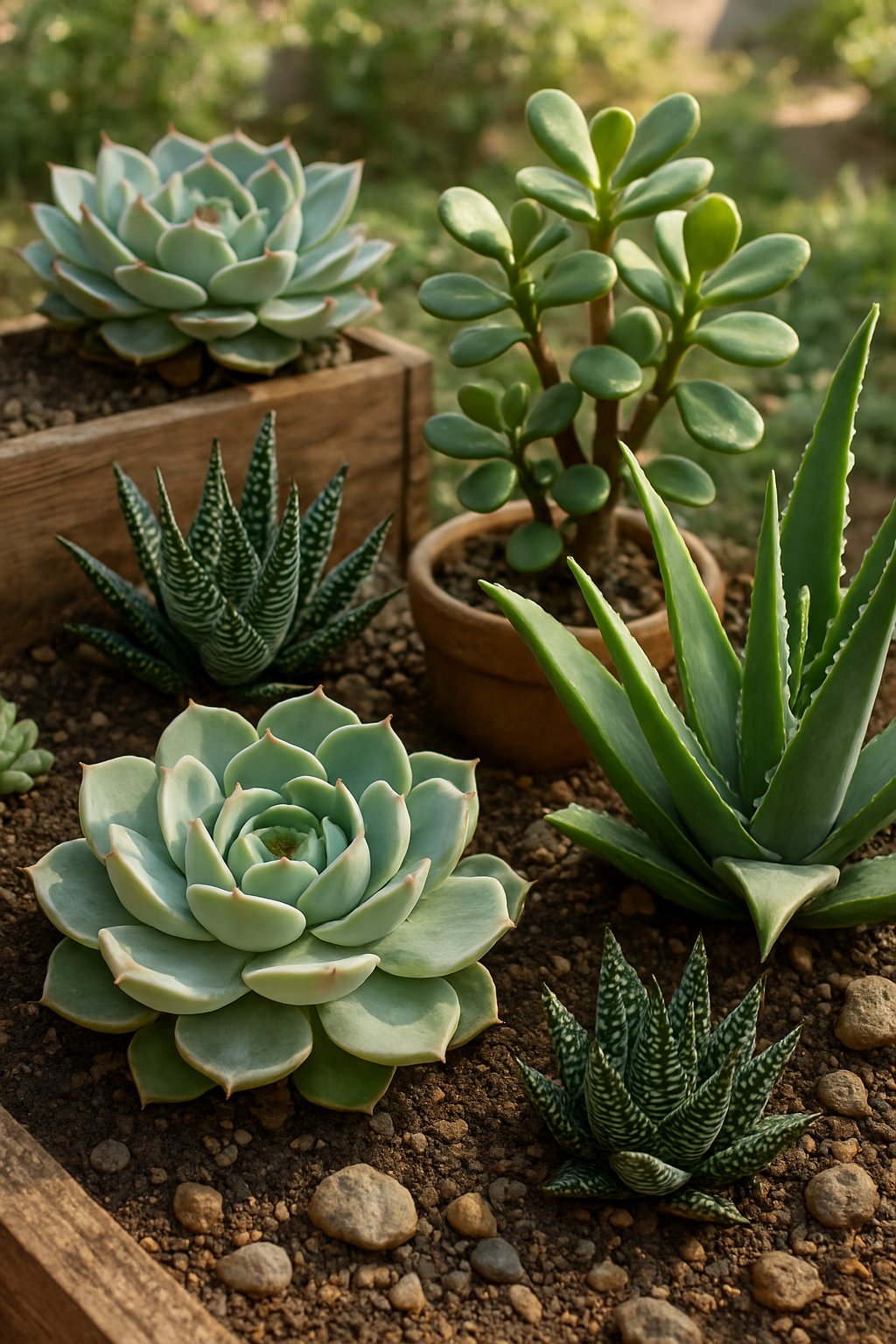
Succulents bring all sorts of colors and shapes to your garden, and they barely need any water. These drought-resistant plants come in types like aloe, jade plants, and snake plants.
Mix up sizes and colors to create eye-catching displays. Plant them close together for a lush look or space them out for a more desert vibe.
Succulents work well in rock gardens, containers, or terraced spaces. They add texture and interest while staying pretty with minimal care.
They thrive in poor soil and love hot weather. If other plants struggle, succulents usually do just fine.
Expert Tip from MrPlanter: “Group succulents with similar water needs together to make care easier. Choose containers with drainage holes to prevent root rot and keep your plants healthy.”
6. Add a DIY birdbath to attract local wildlife
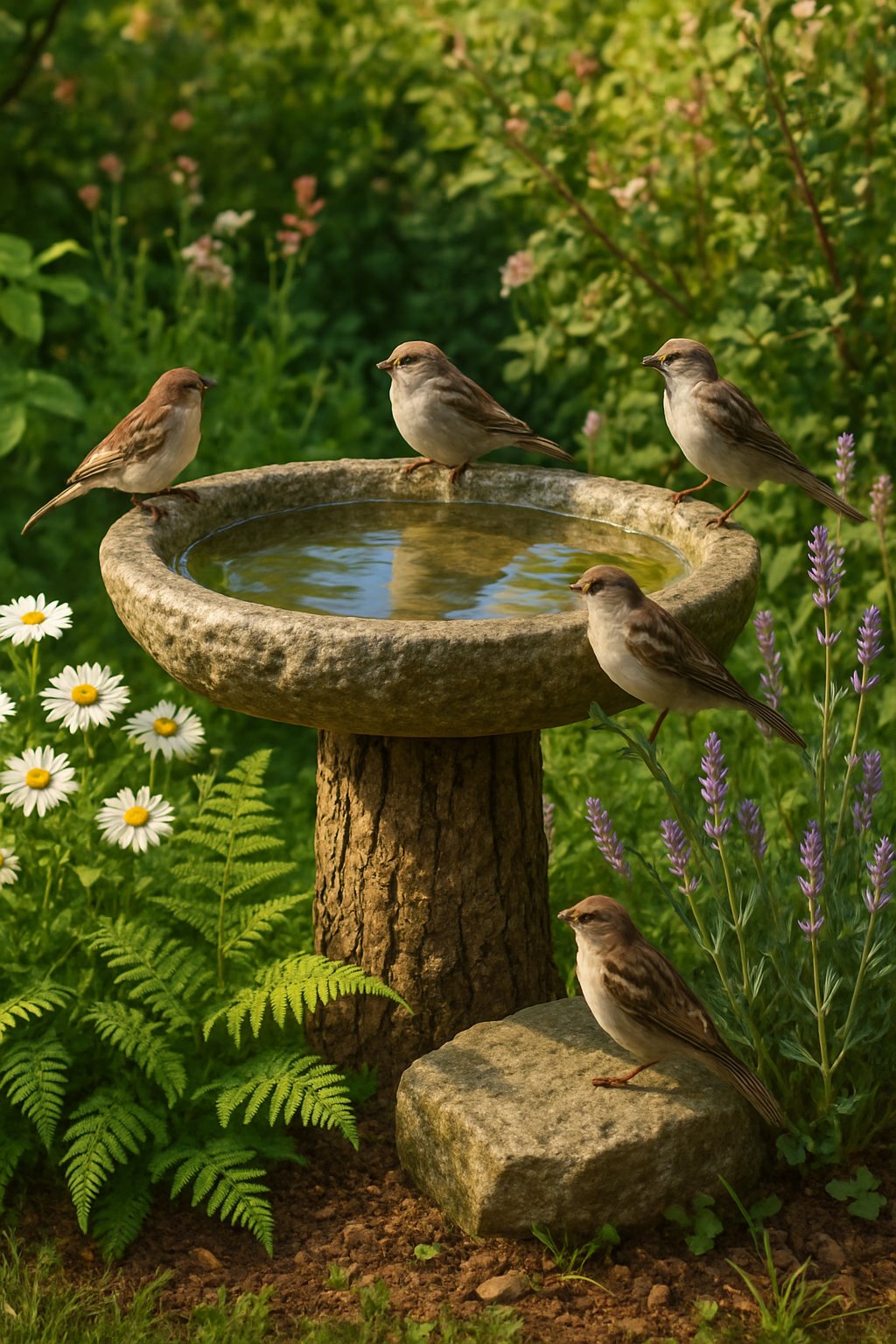
Making your own birdbath brings beautiful birds right to your backyard. You can use simple stuff you already have at home.
Flip a large flower pot upside down for the base. Put a shallow dish or old pie pan on top for the water bowl.
Terra cotta pots give a rustic look, and you can stack different sizes for extra height. Old lampshades, vintage dishes, or even cake stands make fun birdbath designs.
Use a shallow basin that holds one or two inches of water. Place your birdbath away from trees where cats might hide. Birds want to feel safe when they visit.
Change the water every few days to keep it fresh. Clean water brings more birds and keeps mosquitoes away.
Expert Tip from MrPlanter: “Add a few small stones or pebbles to your birdbath basin to give birds better footing. This simple addition makes nervous birds feel more secure and encourages them to visit more often.”
7. Plant shade-loving ferns under trees
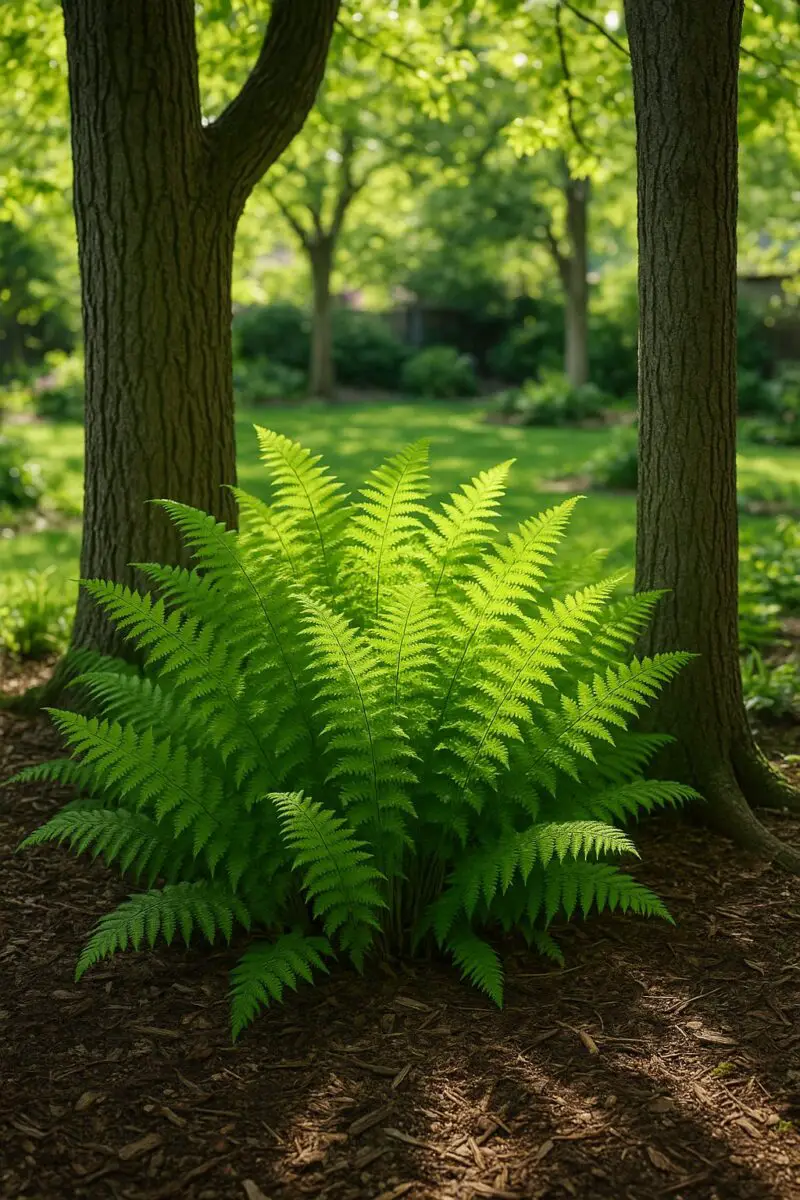
Turn those shady spots under trees into a green hideaway. Ferns thrive in shade and get along great with tree roots.
These tough plants handle low light where most flowers just won’t grow. You don’t need direct sunlight for a pretty garden here.
Try Japanese Painted Fern for its unique silver and green leaves. Maidenhair ferns bring a soft touch with their delicate fronds. Ostrich ferns grow tall and create a bit of privacy.
Mix different fern types for variety. Use both small and large ones to build layers of green texture. The contrast makes the area look full and interesting.
Ferns need less water once they settle in. They handle dry soil under trees better than most flowers. Plant them in spring and let them fill in on their own.
Expert Tip from MrPlanter: “Plant ferns in small groups of three to five for the best visual impact. Water them regularly the first month, then let them adapt to your tree’s natural moisture levels.”
8. Start a windowsill microgreens garden
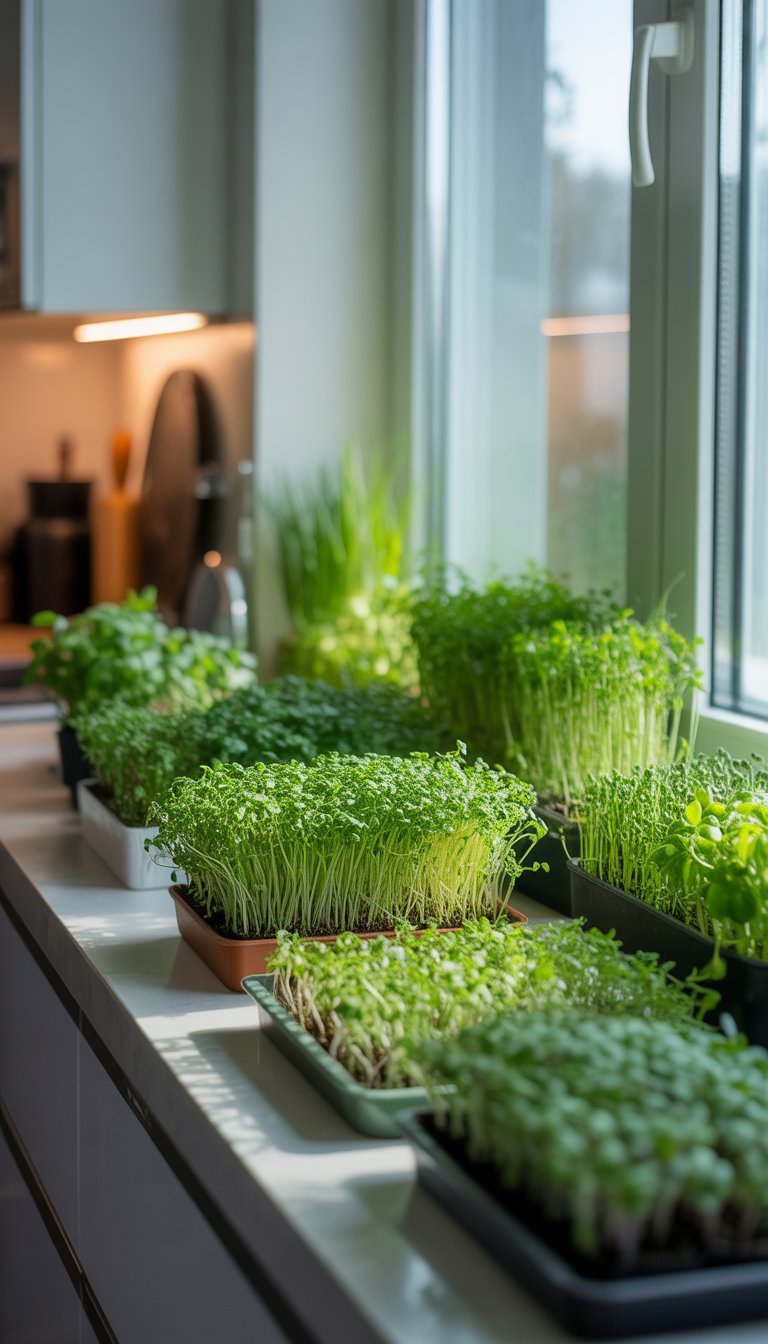
You can grow fresh greens right on your windowsill with barely any effort. Microgreens are perfect for small spaces and grow super fast.
All you need is a shallow tray, some seeds, and a sunny window. These tiny plants are ready to harvest in about a week.
Microgreens pack a lot of nutrition into a small bite. You can grow them year-round, even in the coldest months.
Start with easy ones like radish, pea shoots, or sunflower greens. They’re forgiving and sprout quickly for beginners.
Just scatter seeds on moist soil in your tray. Keep them watered and watch them pop up in days.
Expert Tip from MrPlanter: “Place your microgreens tray on a south-facing windowsill for the best light. Rotate the tray daily so all your greens grow evenly.”
9. Install ambient solar garden lights
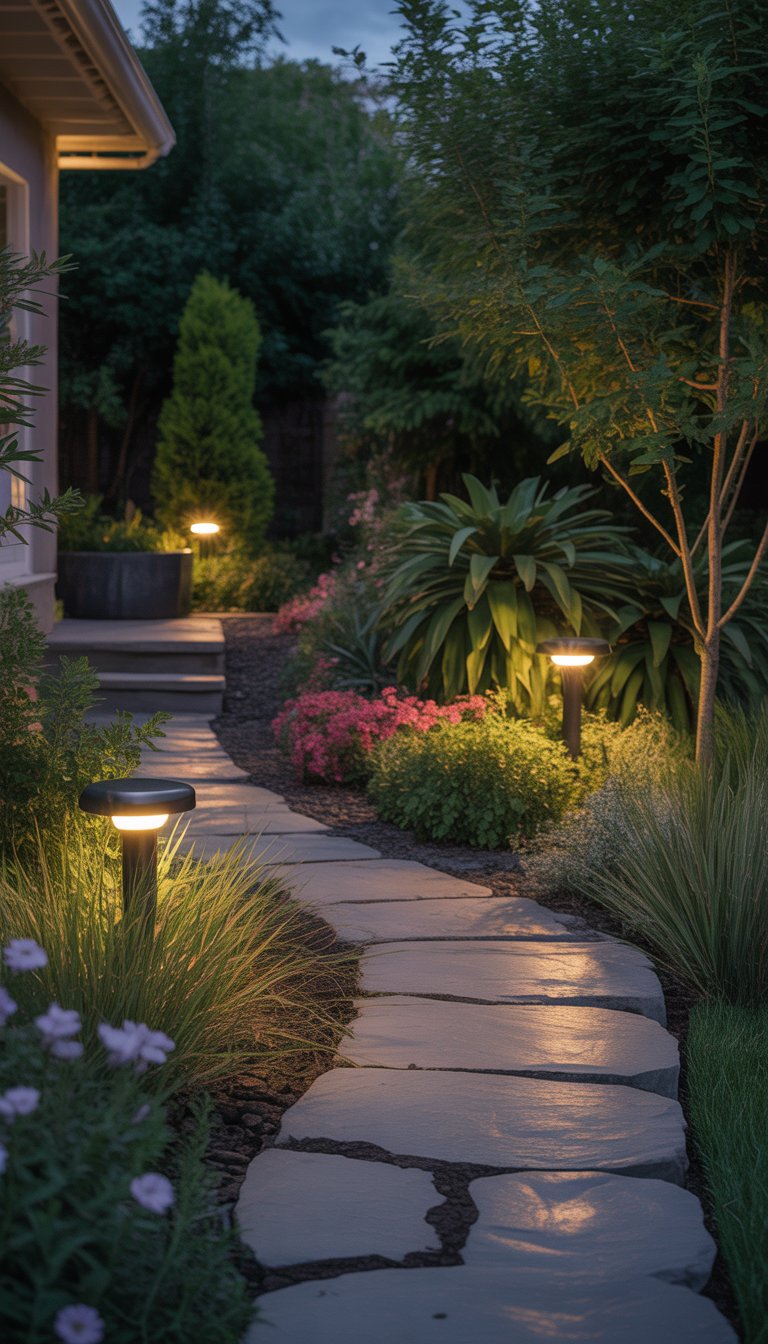
Solar garden lights add a cozy vibe without bumping up your electric bill. These lights soak up the sun during the day and turn on by themselves at dusk.
Pick pathway lights to guide folks along walkways. Solar globes and cubes give a modern look to patios and decks. String lights work nicely for parties or just relaxing outside.
Line your garden borders with lights to highlight your favorite plants. Solar spotlights can show off trees or special features. Lanterns add a little charm to your seating areas.
Most solar lights are easy to set up. Just stick them in the ground or hang them where they’ll get direct sunlight. Wipe off the solar panels every month to keep them working their best.
Expert Tip from MrPlanter: “Position solar lights where they receive at least 6 hours of direct sunlight daily for optimal charging. Avoid placing them under trees or overhangs that block sunlight.”
10. Mix perennial and annual flowers for year-round color
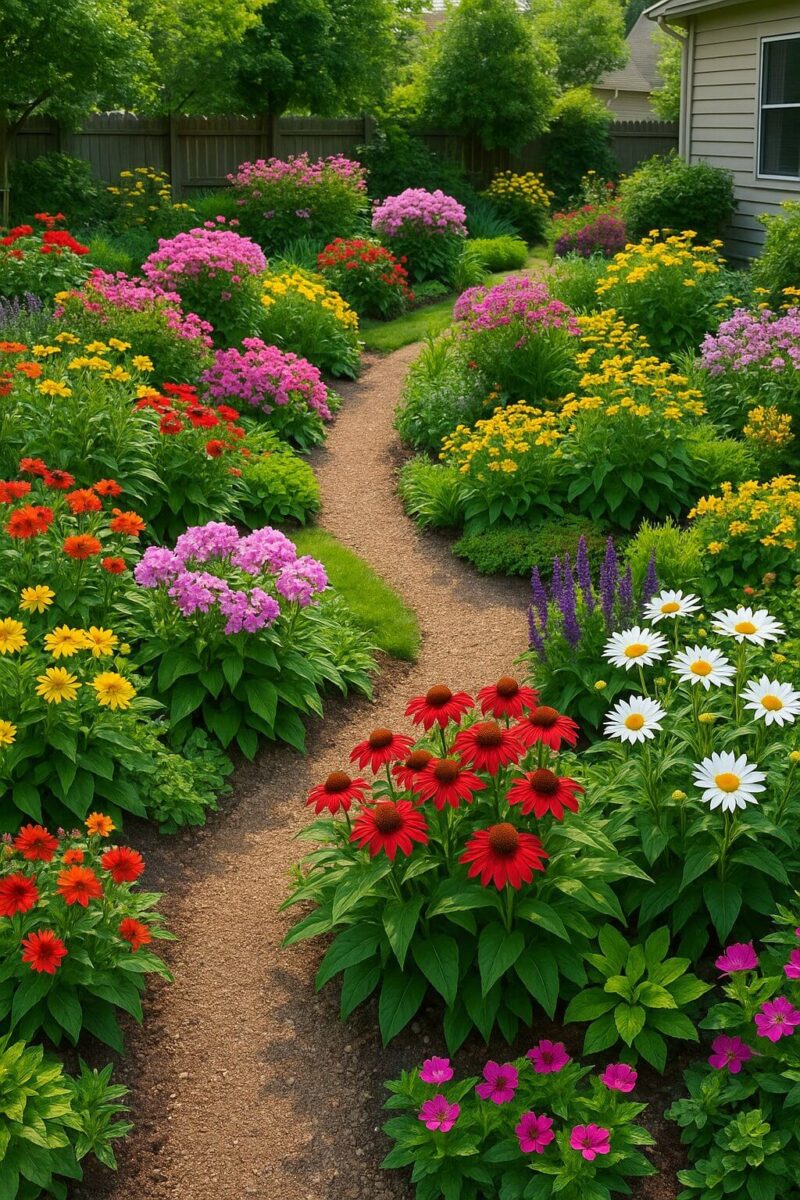
When you mix perennial and annual flowers, your garden stays colorful from spring to fall. Perennials pop up every year and give your garden some structure.
Annuals, on the other hand, bloom like crazy for one season, then call it quits. I like to plant perennials as my main plants since they come back again and again.
Then I fill in the empty spots with bright annuals. This trick keeps things looking lively, even when the perennials take a break.
Annuals really shine when the perennials aren’t doing much. You can switch up the colors each year, so your garden never gets boring.
Pick perennials that bloom at different times. That way, you always have something happening.
Toss in annuals wherever you see a gap in color. It’s a simple way to keep things interesting all season.
Expert Tip from MrPlanter: “Plant annuals in containers that you can move around your perennial beds to fill bare spots as they appear. This gives you flexibility to adjust your color scheme throughout the season.”
11. Create a sensory garden with fragrant and textured plants
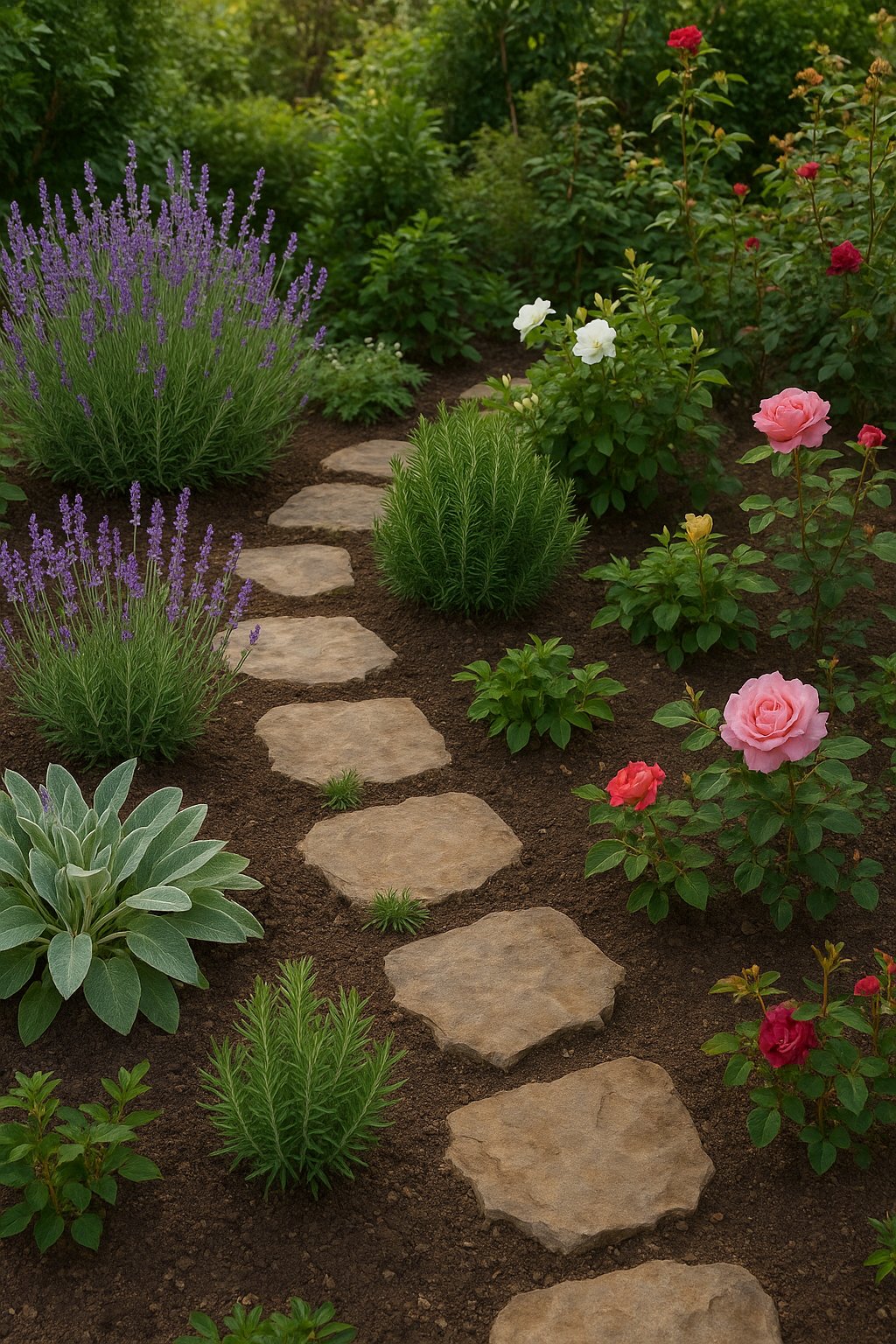
A sensory garden really wakes up your outdoor space by engaging all five senses. You can turn almost any spot into a peaceful retreat by picking plants with different smells, feels, and colors.
Start with fragrant herbs like lavender, rosemary, and mint. These smell so good and feel nice when you touch them.
I like to plant them along walkways so you brush against them as you walk by. Lamb’s ear brings soft, fuzzy leaves, and ornamental grasses add gentle rustling sounds.
Try mixing smooth hostas with rougher plants for a fun combo. Colorful flowers like marigolds and sweet peas attract butterflies and make the garden smell amazing.
Jasmine is another favorite for its scent. If you want, add some edible flowers like nasturtiums for a little taste.
Expert Tip from MrPlanter: “Place your most fragrant plants near seating areas where you can enjoy their scents while relaxing. Group plants with similar water needs together to make maintenance easier.”
12. Grow dwarf fruit trees in pots
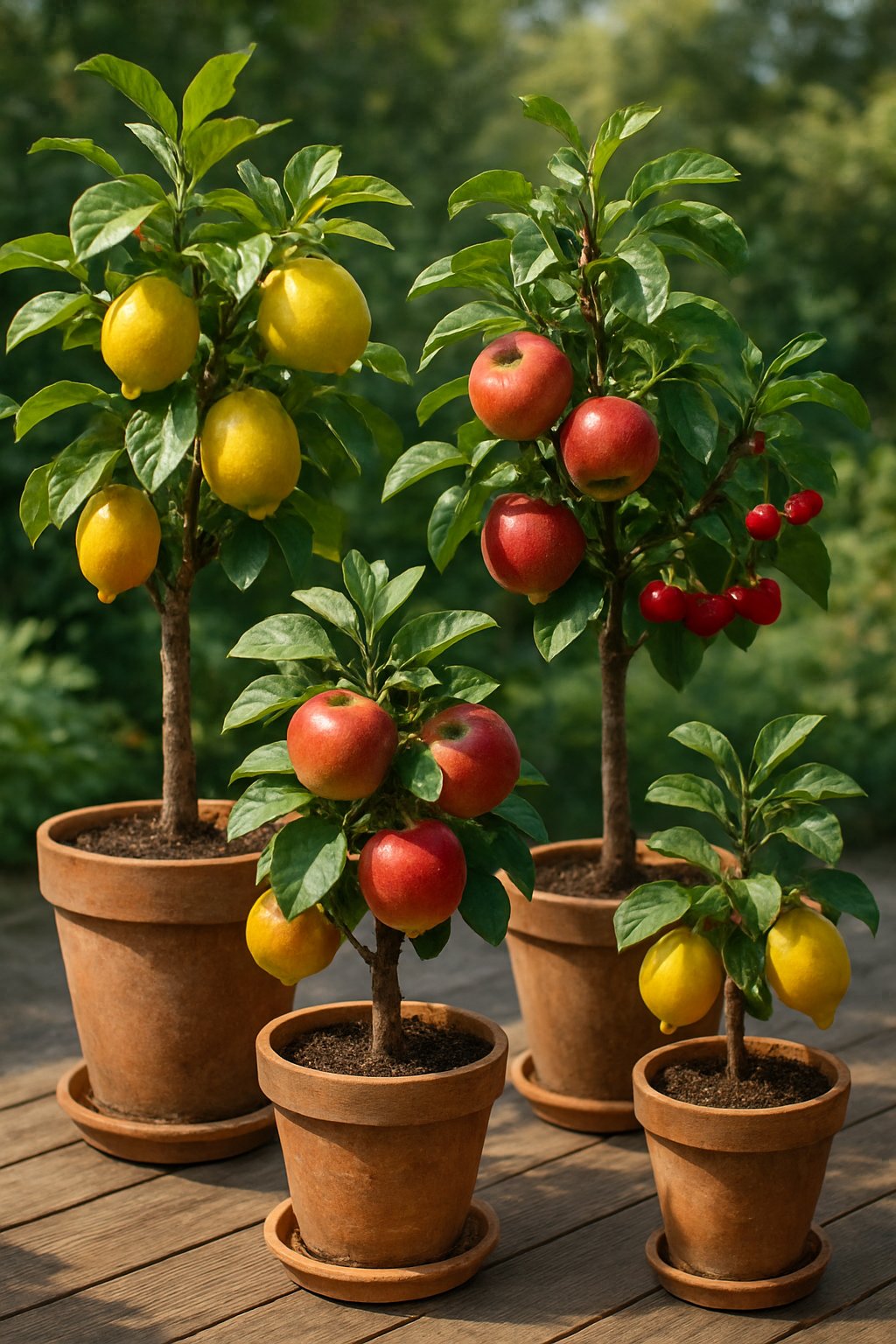
You can grow your own fresh fruit, even if you don’t have much space. Dwarf fruit trees fit right into pots on patios, balconies, or even indoors.
Most fruit trees come in dwarf versions now. Apples, pears, cherries, and citrus all work great in containers.
These little trees still give you full-sized fruit. Just pick a big pot with drainage holes so the roots have space.
Use good potting soil meant for containers. Place the tree where it gets lots of sunlight—at least 6 hours a day.
Water it regularly but don’t let it get soggy. You can move the pots around if the weather turns rough, which makes things way easier.
Expert Tip from MrPlanter: “Choose dwarf varieties specifically bred for containers rather than regular trees that might outgrow their pots. Feed your potted fruit trees monthly during growing season since container soil loses nutrients faster than garden soil.”
13. Use garden trellises to save space and add height
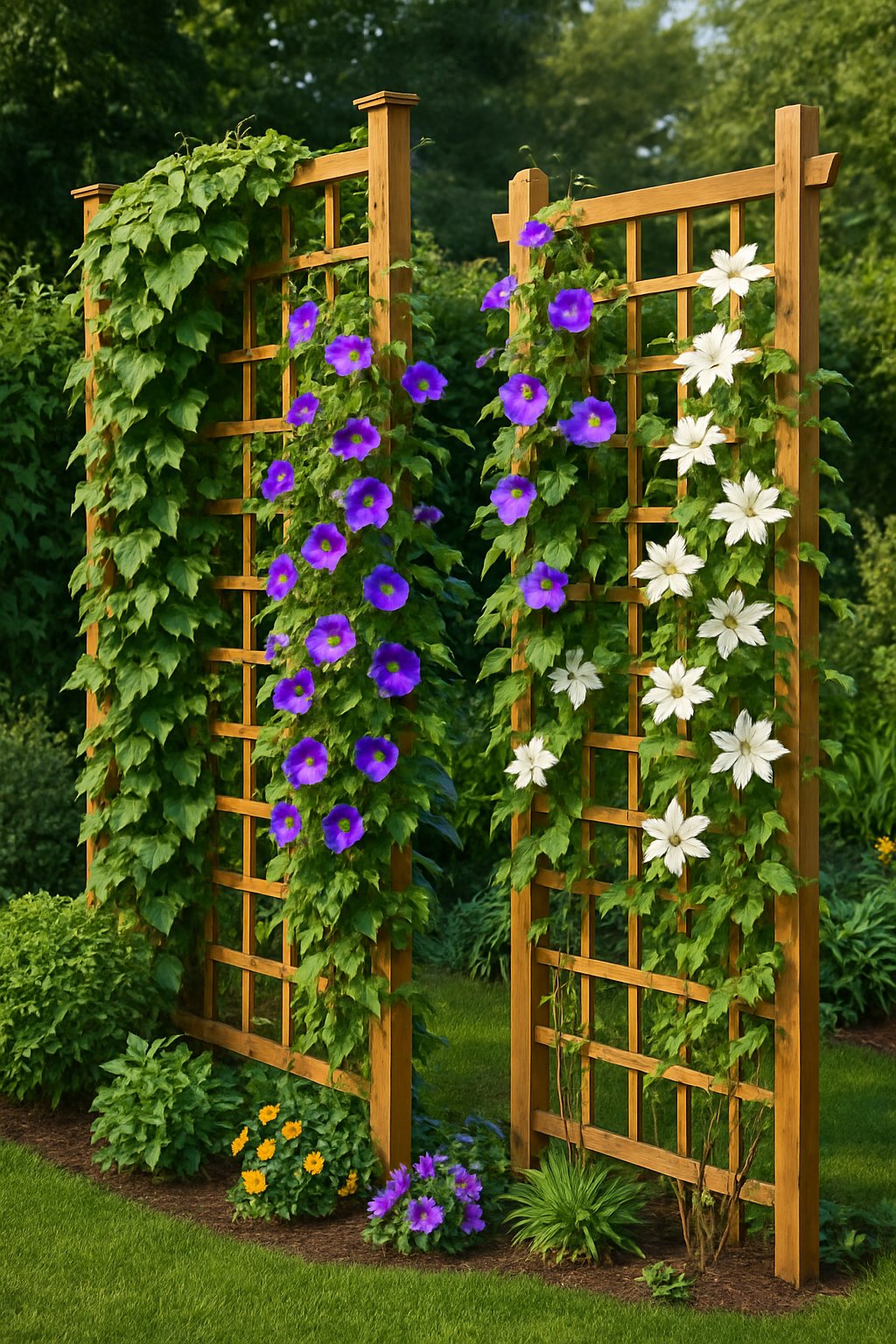
Garden trellises let you grow plants up instead of out. This saves ground space for other things you want in the garden.
I like to train climbing plants like beans, peas, or flowering vines up trellises. It looks cool and makes a vertical garden that really stands out.
Trellises are perfect for small yards. You can fit more plants without crowding your space.
Set up trellises to make privacy screens or shady spots. I sometimes put them between seating areas or along the fence for natural barriers.
Plants usually grow better with support. Air moves through easier, which helps prevent disease, and picking veggies is a breeze.
Expert Tip from MrPlanter: “Choose sturdy materials like cedar or metal for your trellis to support heavy vines as they mature. Install your trellis before planting to avoid damaging roots later.”
14. Compost kitchen scraps to enrich your soil
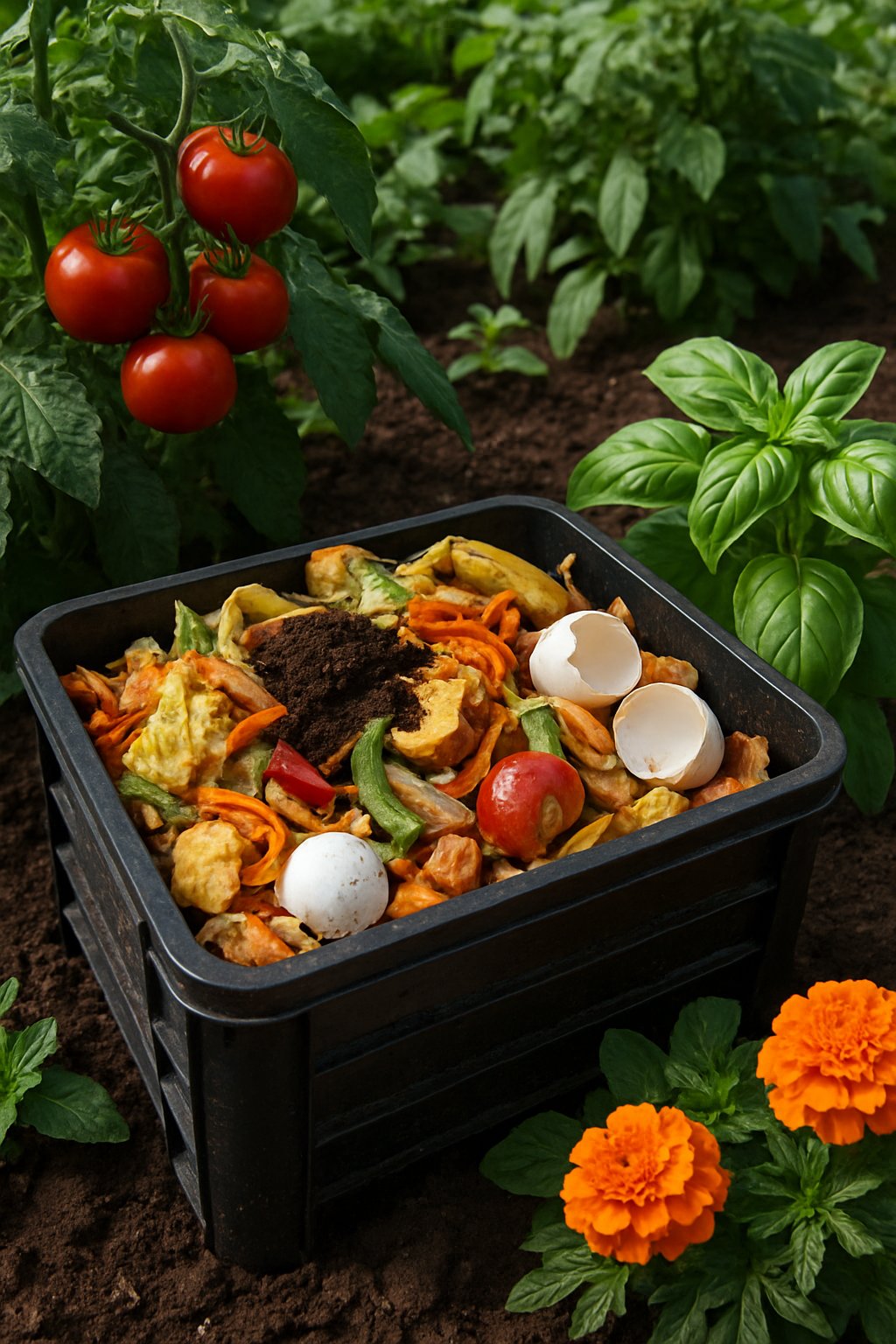
Your kitchen scraps make awesome compost for your garden. Coffee grounds have about 2% nitrogen and feed your plants as they break down.
Eggshells, banana peels, and veggie scraps all add nutrients too. I started a simple compost bin in my backyard, but you can use a small container if you live in an apartment.
Layer your kitchen scraps with brown stuff like dry leaves or shredded paper. This helps everything break down right.
When you compost, you cut down on waste and make rich soil for your plants. It saves money on fertilizer, and your plants will thank you.
Turn the pile every now and then and keep it a little moist. In a few months, you’ll have dark, crumbly compost ready for your garden.
Expert Tip from MrPlanter: “Avoid adding meat, dairy, or oily foods to your compost pile as they attract pests and create bad smells. Stick to fruit and vegetable scraps, coffee grounds, and eggshells for the best results.”
15. Design a seasonal butterfly garden
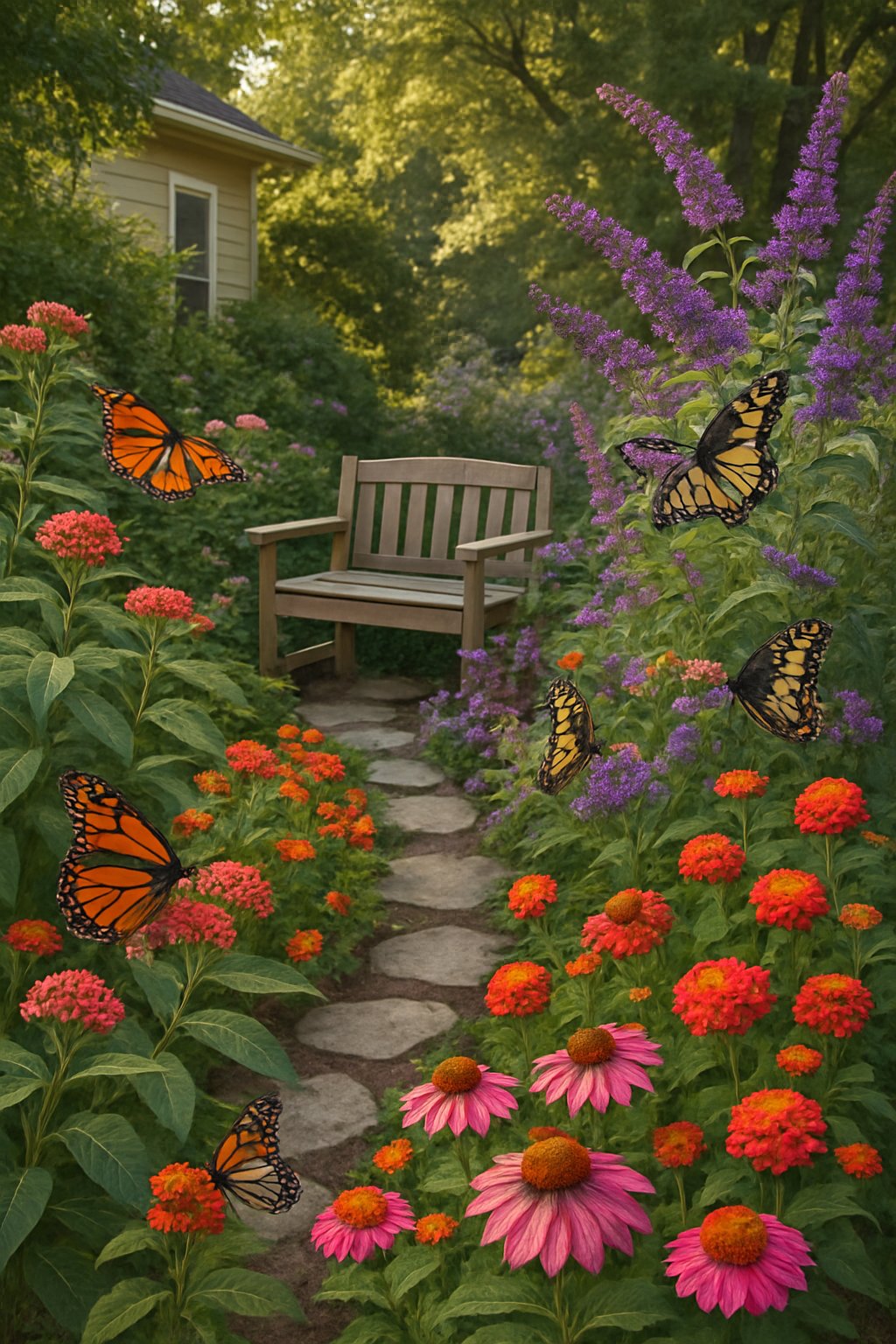
A butterfly garden adds so much color and movement to your yard. Plus, you get to help out these important little pollinators.
Pick a sunny spot that gets at least 6 hours of sunshine. Plan your garden with plants that bloom at different times.
Early spring flowers like lilacs and wildflowers bring in the first butterflies. Summer favorites like zinnias, marigolds, and sunflowers keep the party going.
Choose native plants that butterflies in your area love. These are easier to grow and give butterflies the food they need.
Add both nectar plants for adult butterflies and host plants for caterpillars. Set out a shallow dish of water or a birdbath—just make sure it’s not too deep.
Expert Tip from MrPlanter: “Plant flowers in clusters rather than single plants to create bigger color patches that butterflies can spot easily. Add flat stones in sunny areas where butterflies can rest and warm their wings.”
16. Plant a wildflower meadow patch
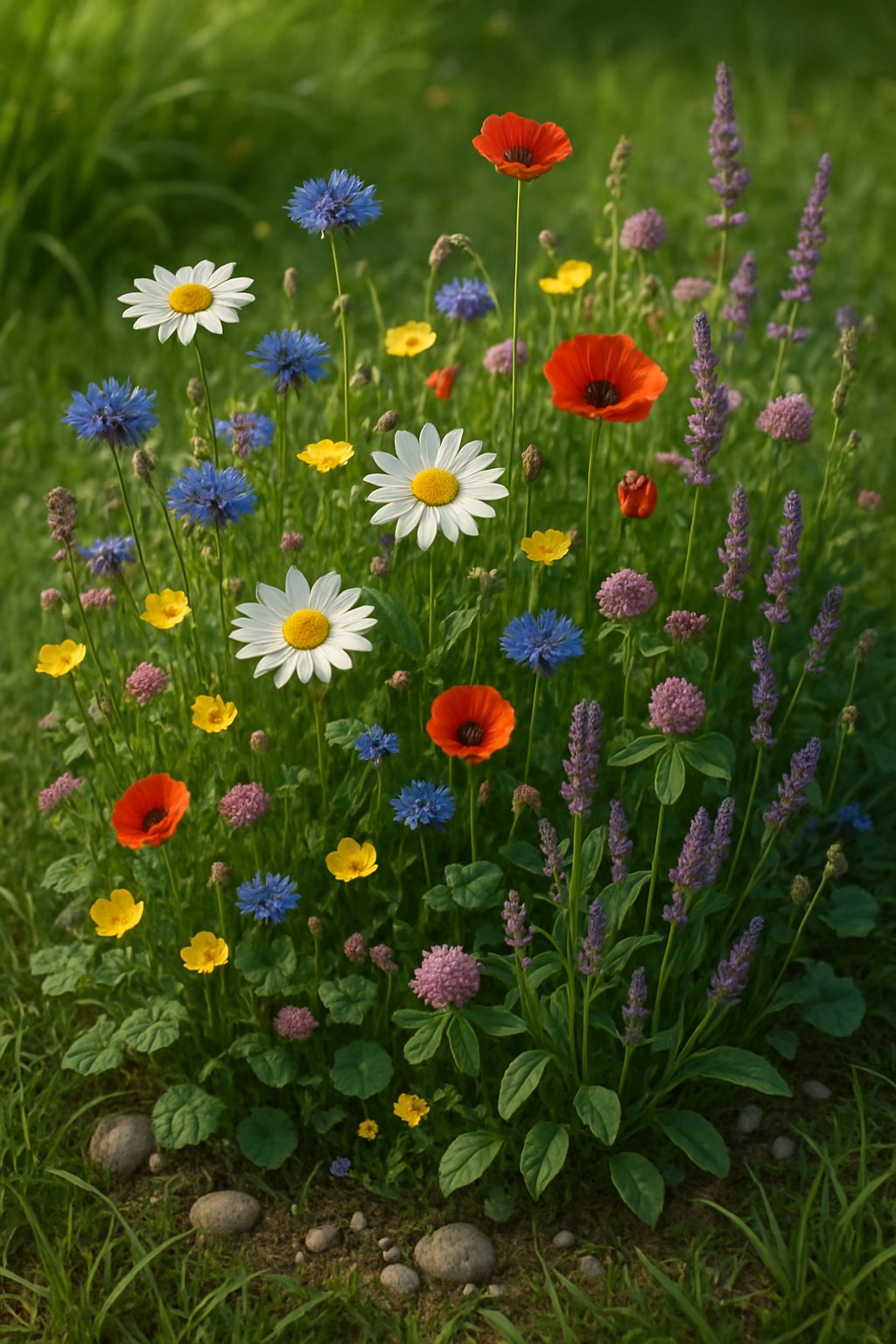
You don’t need a huge yard to enjoy a wildflower meadow. Even a small patch in the corner works great for this low-maintenance garden idea.
Wildflowers help bees, butterflies, and other friendly bugs. Plus, you get to skip mowing that part of the lawn.
Get wildflower seed mixes made for where you live. They give you lots of colors and blooms all season long.
Find a sunny spot with decent drainage. Pull out the grass and weeds first, then scatter your seeds following the directions.
Your wildflower patch will come back year after year with hardly any work. Just let it grow and watch the wildlife show up.
Expert Tip from MrPlanter: “Choose native wildflower varieties that grow well in your climate for the best results. Water lightly after planting but let nature take over once your flowers are established.”
17. Build a cozy garden nook with seating
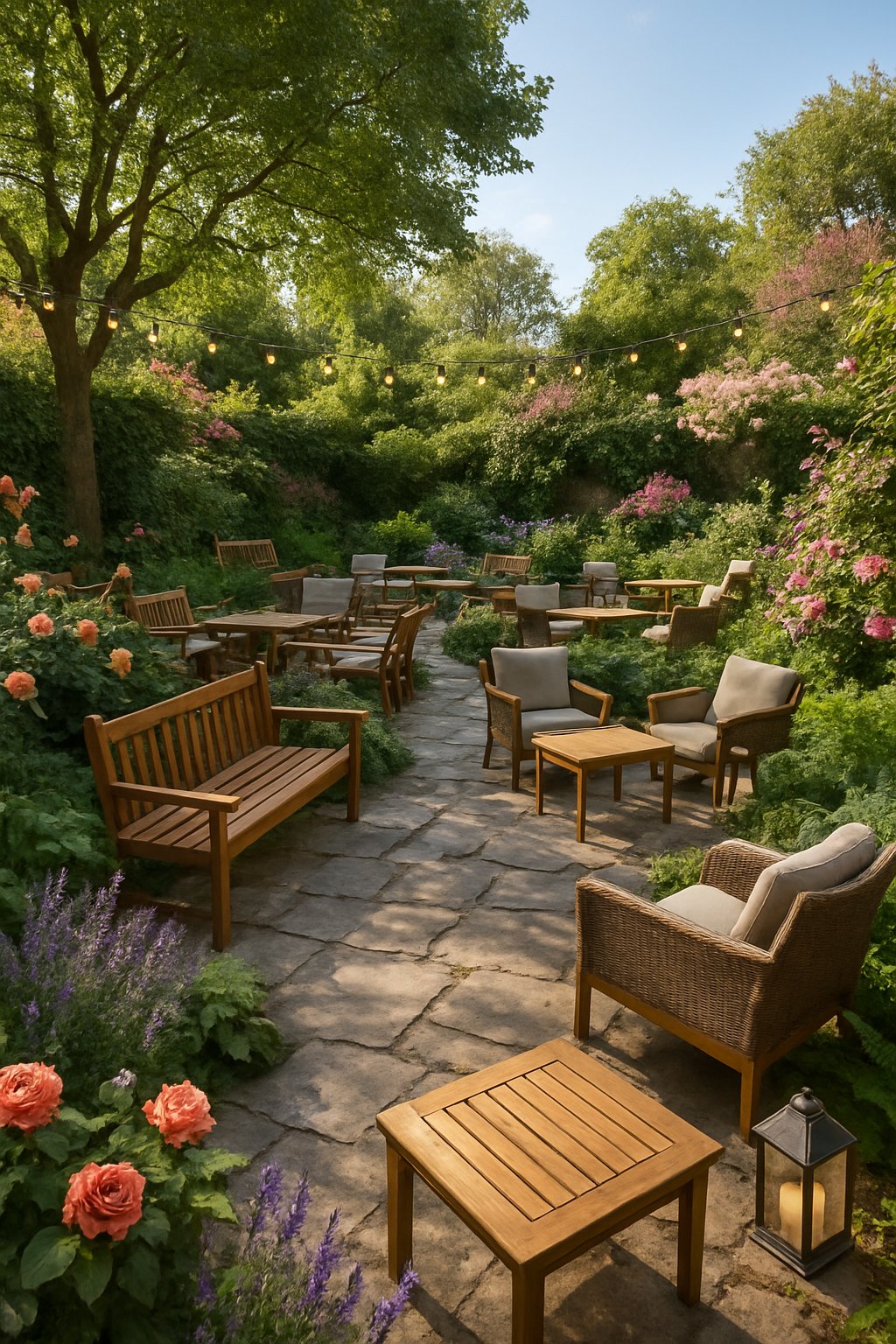
Having a quiet spot in the garden gives you a place to relax and enjoy nature. Pick a tucked-away corner that feels peaceful.
Add comfortable seating like a bench, chair, or even some outdoor cushions. I like using weather-resistant stuff so it lasts.
Surround your spot with plants for privacy. Tall shrubs or climbing vines on a trellis make great green walls.
You might want a little shade, too. Try a small umbrella or a pergola to keep things cool.
Place your seat where you can see your favorite flowers or trees. It’s a nice way to enjoy the view.
Expert Tip from MrPlanter: “Position your garden nook where it gets morning sun but afternoon shade for the most comfortable experience. Add a small side table or plant stand nearby to hold your coffee or book while you relax.”
18. Add a water feature like a small fountain
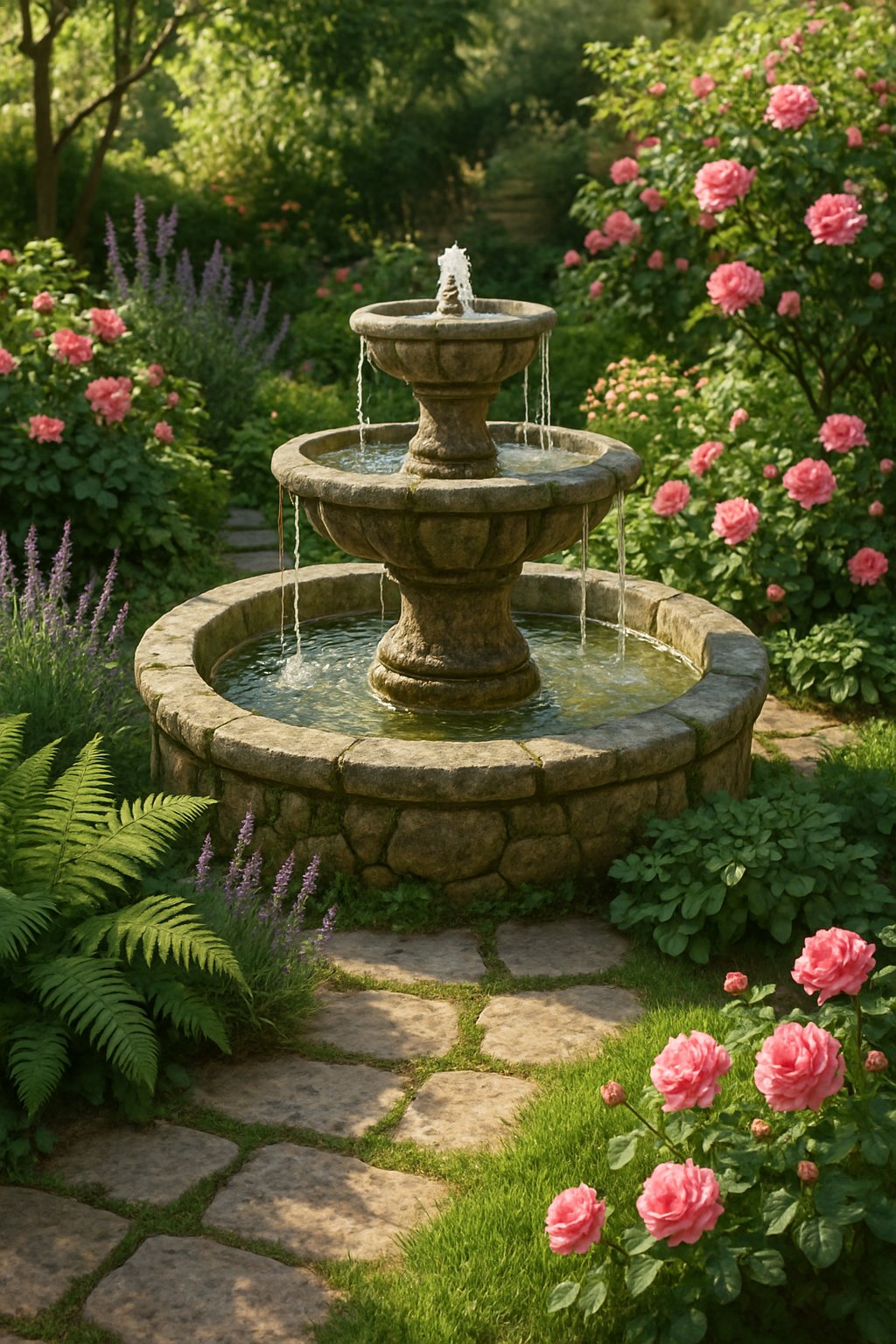
Water features just make a garden feel peaceful. The gentle sound of moving water brings a calm vibe to your space.
You don’t need a big yard to add a fountain. Small ones work great on patios or decks.
Even a tiny fountain can totally change the mood of your garden. Setting one up is usually quick and easy.
Most small fountains just need a simple water pump. You can put them in a container or a small corner.
The sound of water helps block out street noise. Birds love water features, too, so you might get more feathered visitors.
Pick a fountain that fits your style. Rustic barrels look nice in casual gardens, while modern ones go well with sleek spaces.
Expert Tip from MrPlanter: “Choose a fountain with a recirculating pump to save water and reduce maintenance. Place it where you’ll hear the soothing water sounds from your favorite outdoor seating area.”
19. Use mulch to conserve moisture and suppress weeds
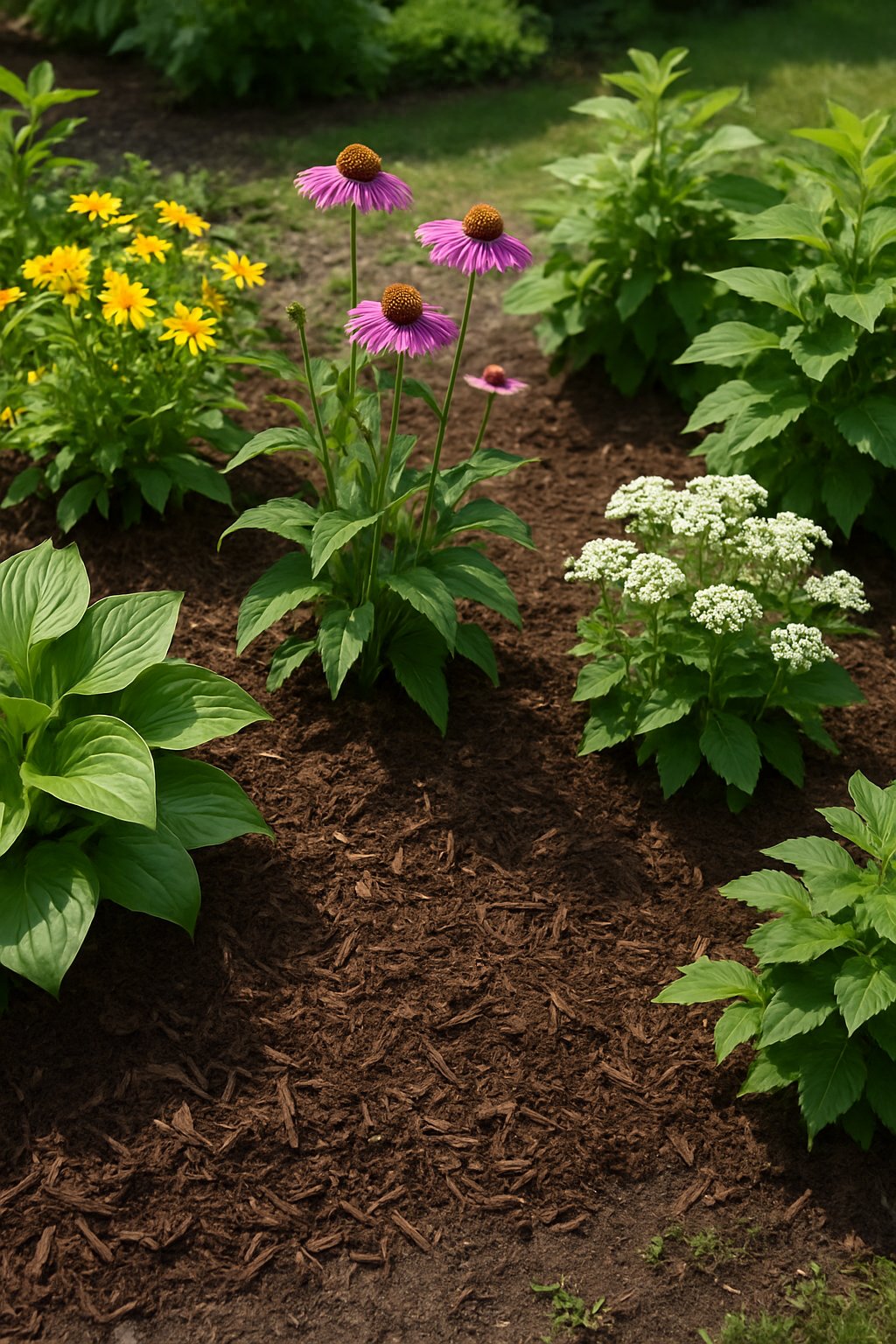
Mulch is one of the easiest ways to keep your garden happy. It covers the soil like a blanket and helps plants stay healthy.
Mulch holds in water, so you don’t have to water as often. You might even cut watering by half or more.
It also blocks weeds from popping up. That means less time pulling unwanted plants.
Spread 2-3 inches of organic mulch around your plants. Straw, bark chips, or compost all work well.
Keep the mulch a few inches away from stems to stop rot and pests. The best time to mulch is after planting, when the soil is still moist.
That way, you lock in moisture for the whole season.
Expert Tip from MrPlanter: “Choose darker mulch colors to help warm cool soil in spring, or lighter colors to keep soil cooler in hot summer areas. Replace organic mulch once a year as it breaks down and feeds your soil.”
20. Grow edible flowers for salads and garnishes
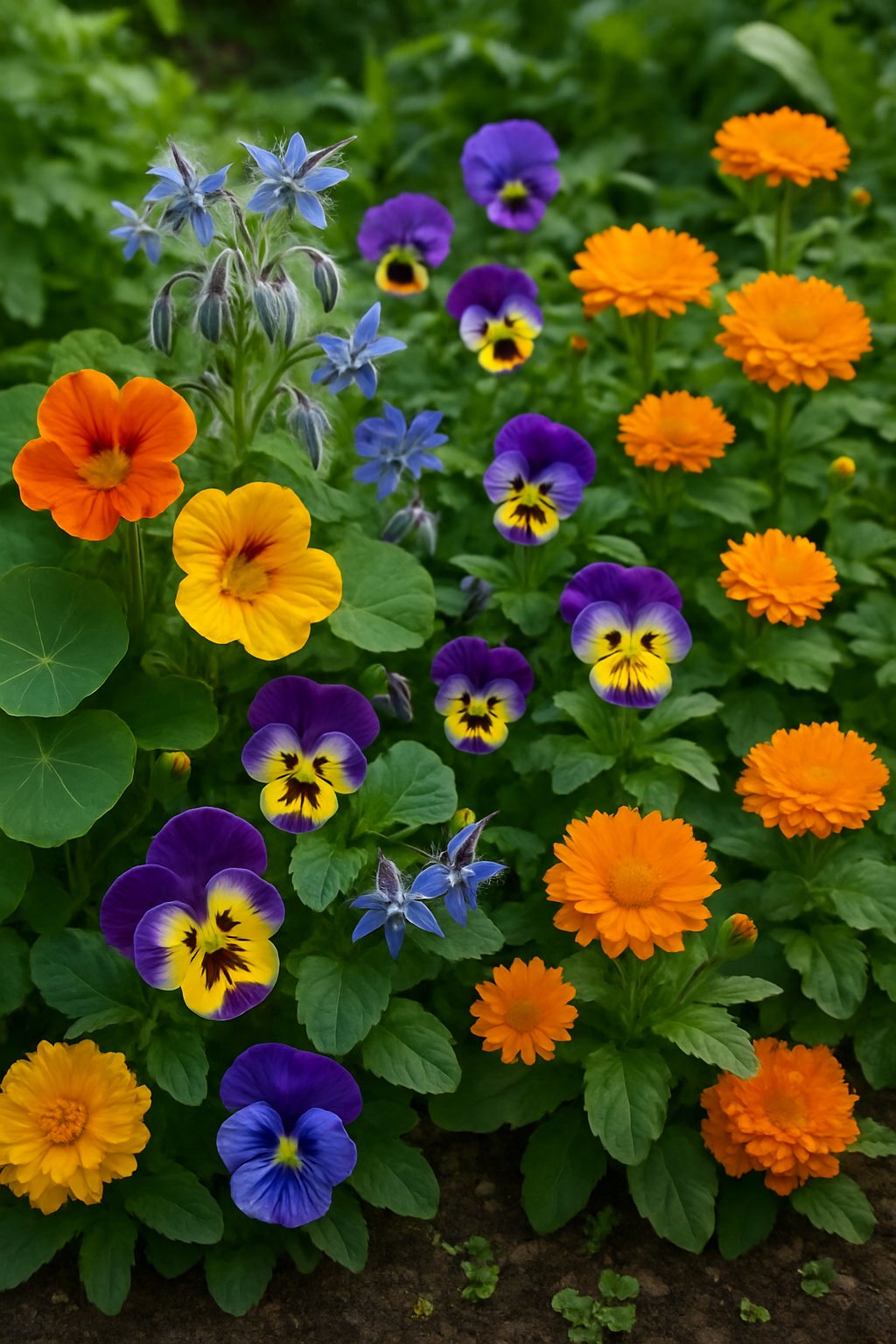
When you grow edible flowers, you add color and flavor right to your meals. These pretty blooms work well in salads, teas, and even desserts.
Nasturtiums make a great choice for beginners. They show off bright orange, red, or yellow flowers and have a peppery kick. You can eat both the flowers and the leaves.
Borage brings you blue star-shaped flowers with a mild cucumber taste. They look awesome floating in summer drinks. Plus, these plants invite helpful pollinators to your garden.
Begonias give a citrus-like tang. You can eat the flowers, stems, and leaves. The petals liven up any plate as a garnish.
You can plant these flowers in beds or containers. They don’t take up much space and don’t need a lot of fuss. Try out a few kinds and see which ones you like best.
Expert Tip from MrPlanter: “Always make sure your edible flowers are pesticide-free and properly identified before eating them. Harvest flowers early in the morning when they’re fresh and wash them gently before using.”
21. Make a wildlife-friendly hedgerow
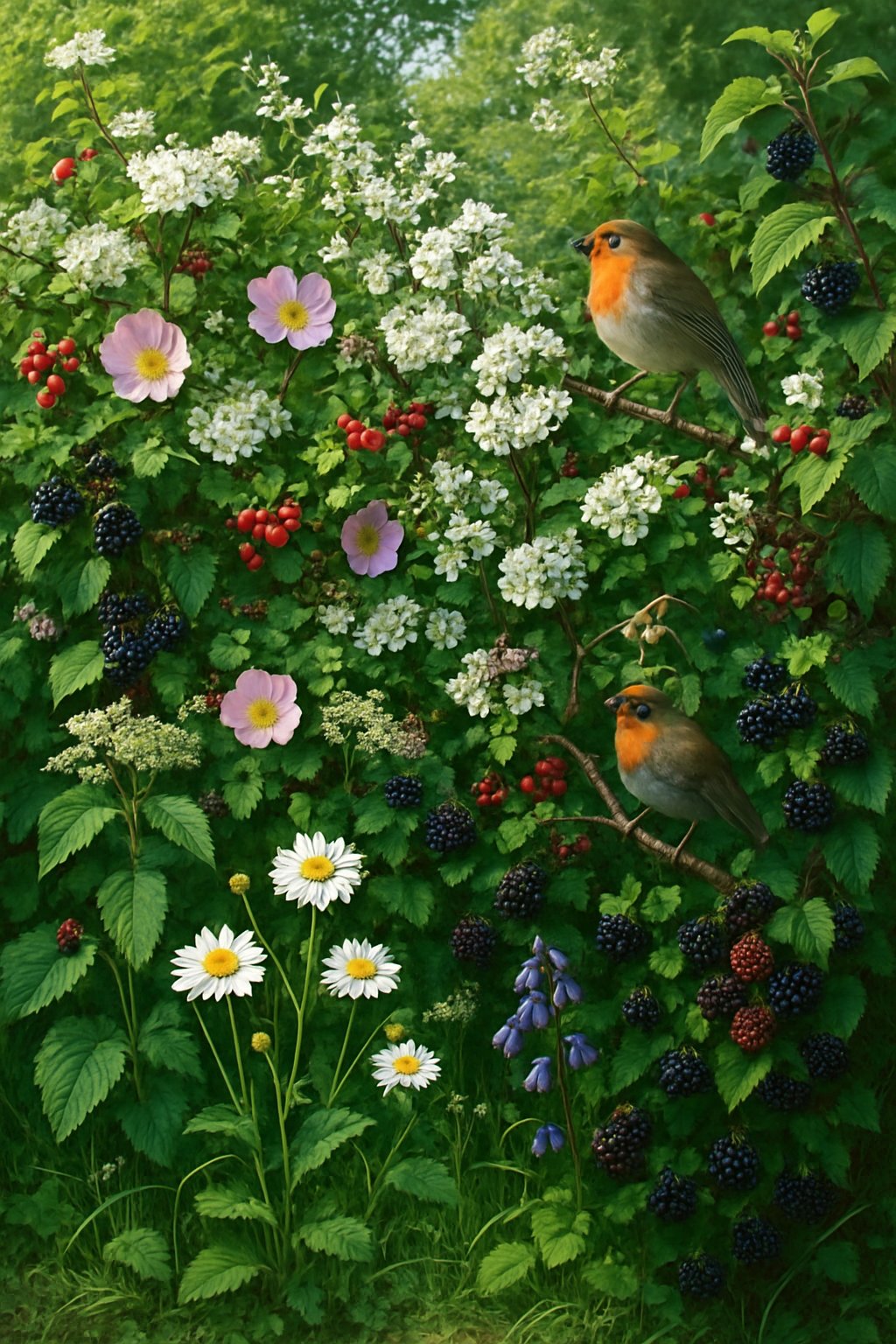
A hedgerow brings nature right up to your yard. It gives birds, bees, and butterflies a good spot to live and find some food.
Pick native plants for the best results. Hawthorn, blackthorn, and holly work well. These shrubs offer berries and shelter that local animals need.
Mix up different types of shrubs. This mix gives wildlife more places to hide and nest. Each plant blooms at different times, so animals get food all season.
Once your hedgerow grows, you barely need to do anything. It acts as a natural screen and helps the environment. Animals can move through hedges much easier than they can with solid fences.
Expert Tip from MrPlanter: “Plant your hedgerow in fall or early spring when plants establish roots easily. Space shrubs 2-3 feet apart so they grow together into a thick, protective barrier.”
22. Set up rainwater harvesting for irrigation
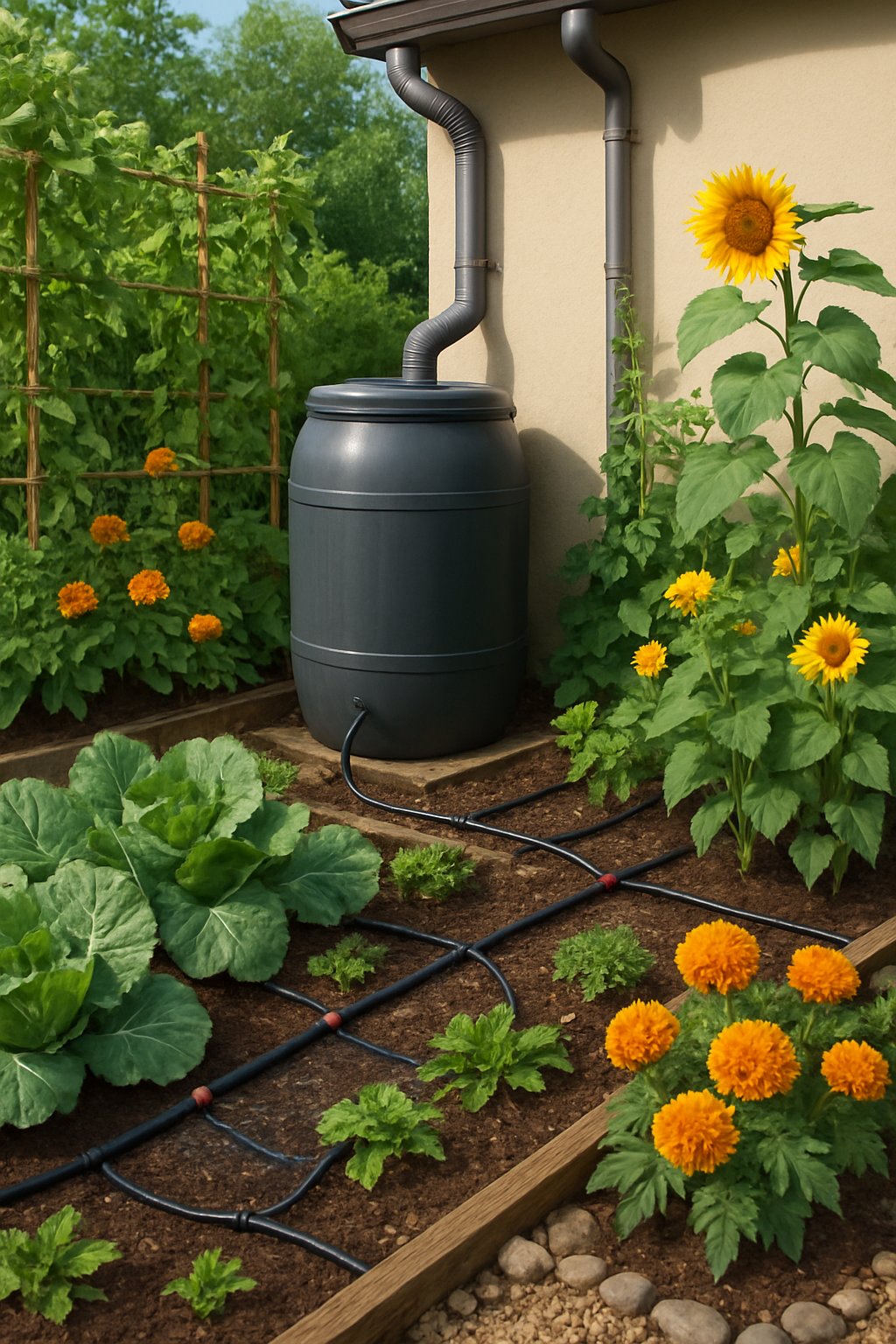
When you collect rainwater, you get free water for your garden. You save money on your water bill and help the planet a bit too.
Start with a simple rain barrel under your downspout. The barrel catches water from your roof every time it rains. Put a lid on the barrel to keep mosquitoes out.
Hook your rain barrel up to a drip irrigation system or soaker hoses. That way, you water plants right at their roots. Pipes and valves help you control where the water goes.
Place barrels in a few spots around your yard to catch even more water. Old containers work fine if you add a spigot at the bottom.
Before you get started, check your local rules about rainwater collection. Some places set limits on how much you can store.
Expert Tip from MrPlanter: “Add a first-flush diverter to your system to skip the initial dirty water from your roof. This keeps your stored rainwater cleaner for your plants.”
23. Grow climbing roses on a pergola
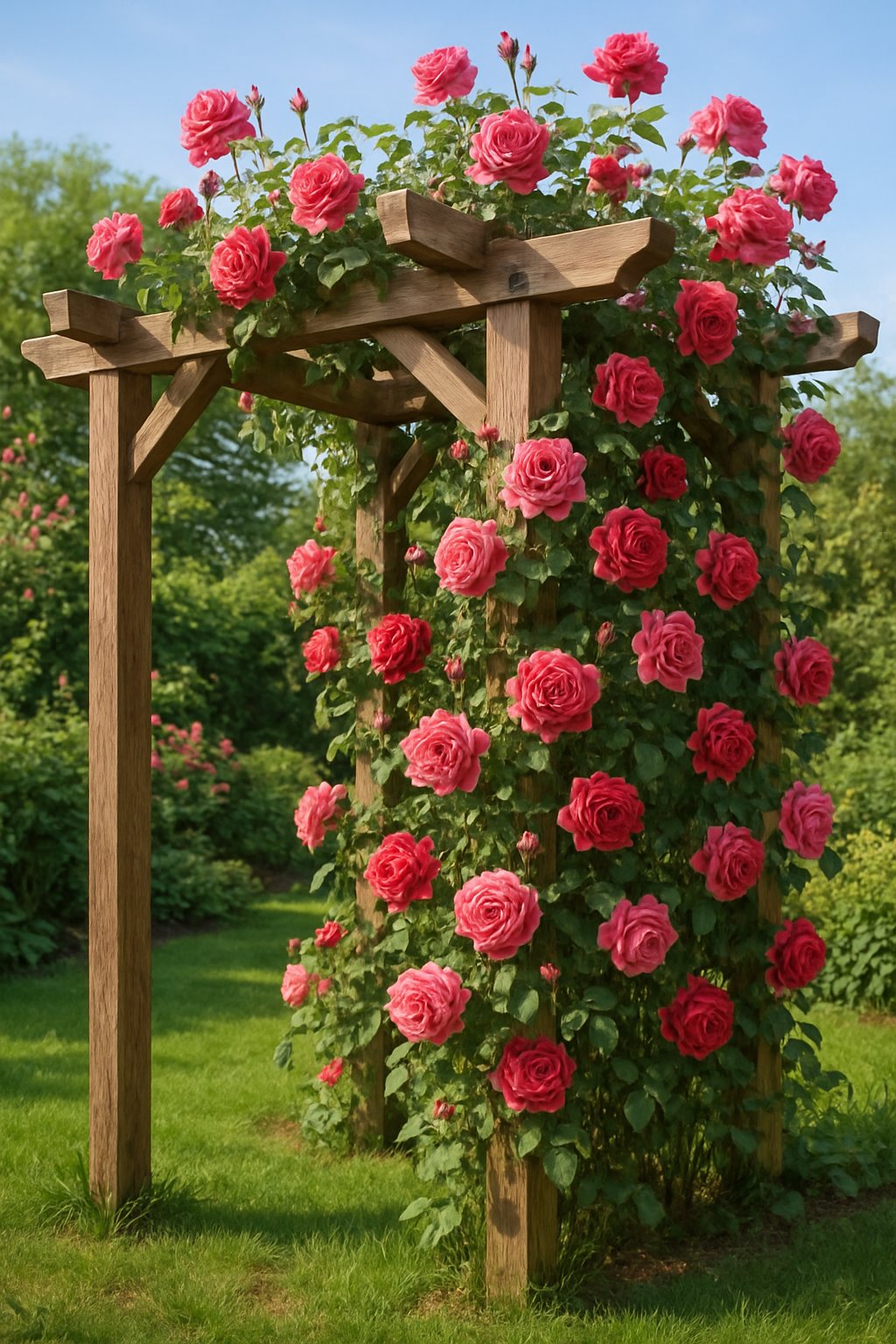
Climbing roses turn a simple pergola into a dreamy, flower-filled spot. They fill the air with sweet scents and look just beautiful.
Pick a strong support system for your roses. Put up sturdy wires, trellis, or lattice on your pergola. These guides help the roses climb and spread the way you want.
Plant your climbing roses near the base of the pergola in early spring. Make sure they get at least six hours of sunlight every day. Water them often, especially when it’s dry.
Guide the rose canes along your support wires as they grow. Tie them loosely to help direct their path. You’ll get better flower coverage that way.
Prune your climbing roses in late winter or early spring. Cut away any dead or sick canes first. Trim back long canes to get more blooms and branching.
Expert Tip from MrPlanter: “Space your trellis wires wider for roses that spread horizontally and closer together for varieties that grow straight up. This simple adjustment makes a huge difference in how well your roses cover the pergola.”
24. Plant lavender to repel pests naturally
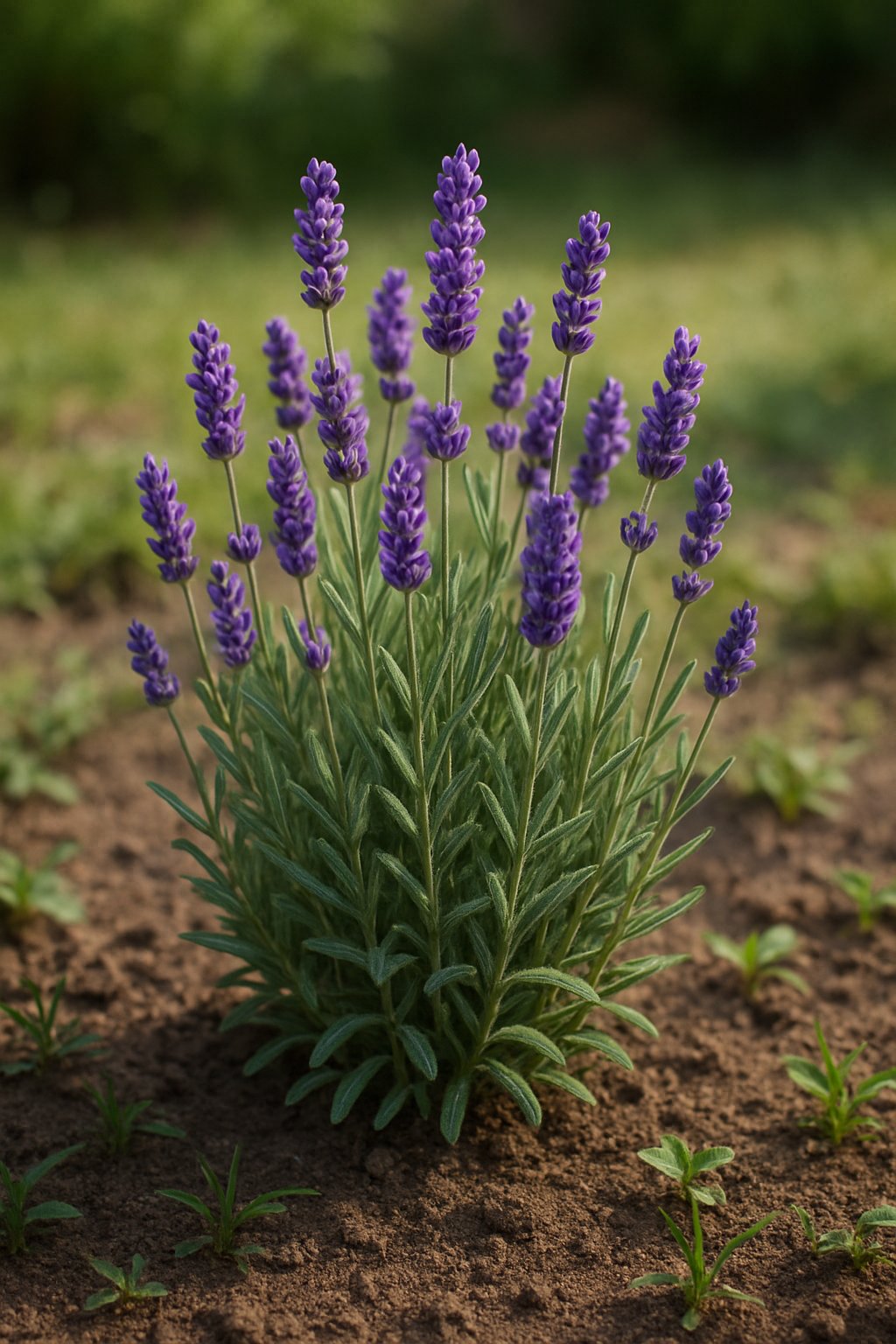
Lavender does a great job as natural pest control for your garden. Bugs really can’t stand the compounds in it, like linalool and camphor.
You can count on lavender to help keep away mosquitoes, moths, flies, and even fleas. That strong scent messes with how they find food or places to lay eggs.
Try planting lavender bushes around your garden’s borders or near spots where you hang out outside. Fresh lavender usually works better than dried if you want to keep pests away.
If you crush the fresh leaves, you’ll release even more oils. That makes the smell stronger, which means it works better on bugs.
Lavender grows easily if you give it a sunny spot and good drainage. It comes back every year and gets a little bigger each time.
The purple blooms honestly look amazing while they do their job. You end up with a prettier garden and way fewer bugs—kind of a win-win.
Expert Tip from MrPlanter: “Place lavender plants near your home’s entry points like doors and windows for maximum pest protection. The scent creates a natural barrier that keeps unwanted insects from entering your living spaces.”
